It was probably the last chance in 2017 to go sailing for a week before winter time would send one low pressure system with strong winds, downpour and high waves after another, let alone that the dropping temperatures would prevent any attempt to have a good time aboard a yacht. I was lucky to find a friend of mine willing to accompany me and so we rigged our ship and set off from Germany´s northernmost town, Flensburg, for 7 days of sailing.
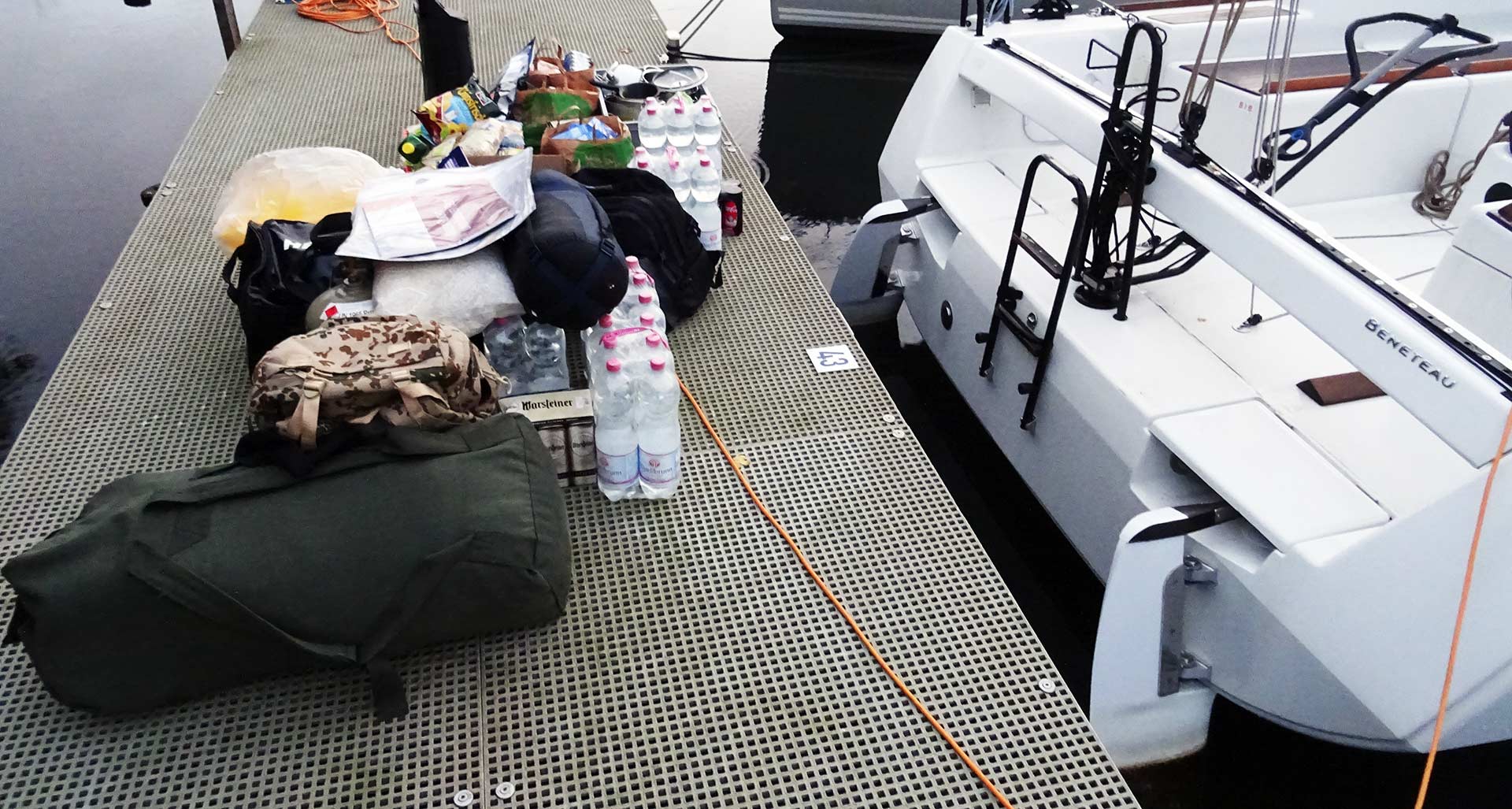
It´s getting dark these days very early, it will be bright daylight pretty late. I didn´t realize the true meaning of this before the end of day one. For now, we hauled our clothing, provisions, fresh water and all kinds of stuff down to the jetty. I parked my car, hoping it would be safe the next week and we made ourselves familiar with our new boat: A Beneteau First 30. Again.
Changing our Plans
Again, but a completely different boat. Whereas I did sail to the Danish Island of Bornholm two months ago in a similar boat by Beneteau, this yacht was as different as boats can be: “It´s the Performance version”, said the owner upon handing over the keys to the boat: “She has a deeper keel, a performance rigging, better sails and above all, she is practically empty.” Weight saving measures …
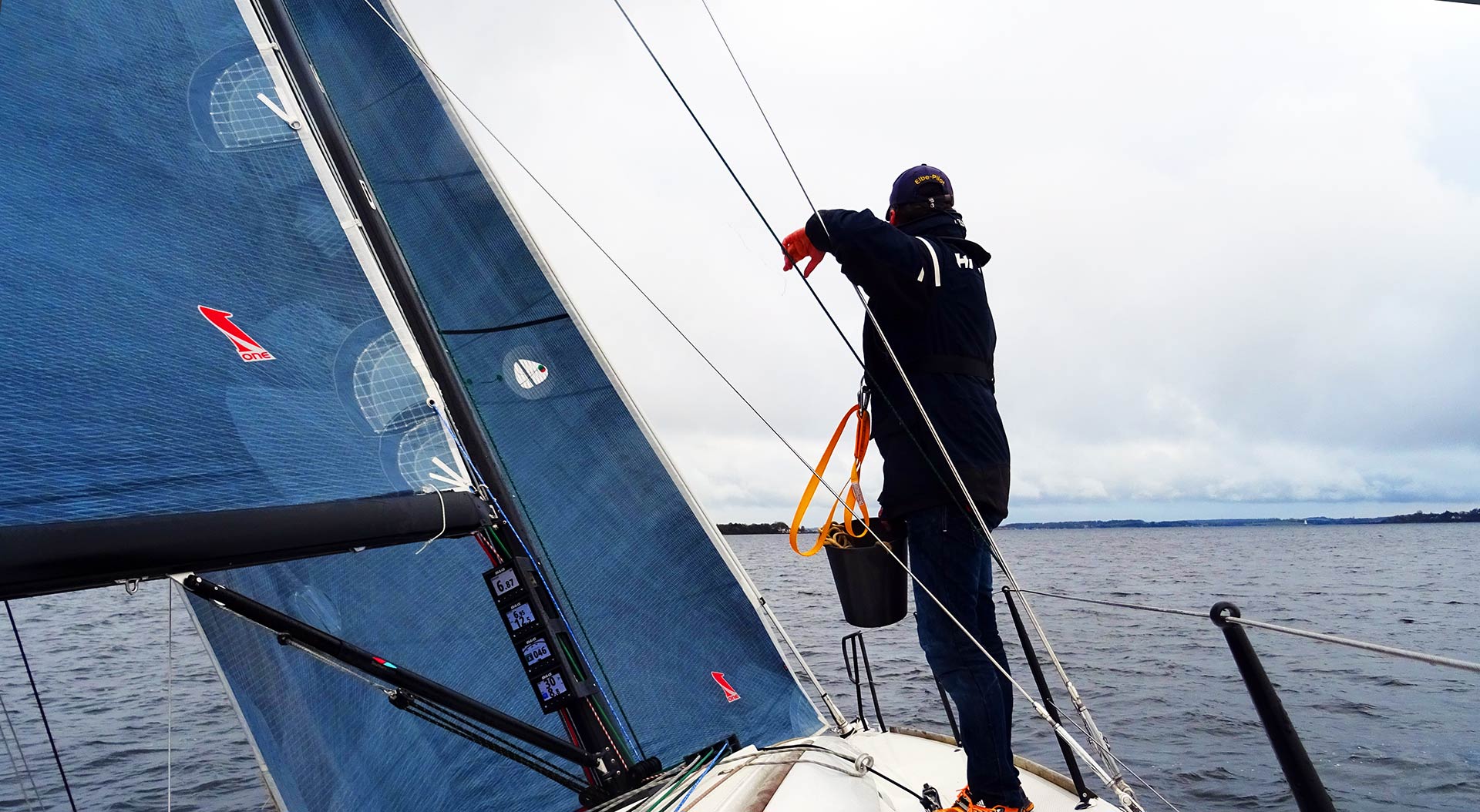
And empty she was indeed. But this all wasn´t so much of importance for us and we slept a good night´s sleep during our first short night aboard the First 30 and dropped all lines to the shore as early as we could. We left Germany in the darkness of a new day´s dawn, got hoisted all the canvas we could set and felt great when the boat sprung to live and ran over the calm waters at mostly well above 7 knots. Perfect!
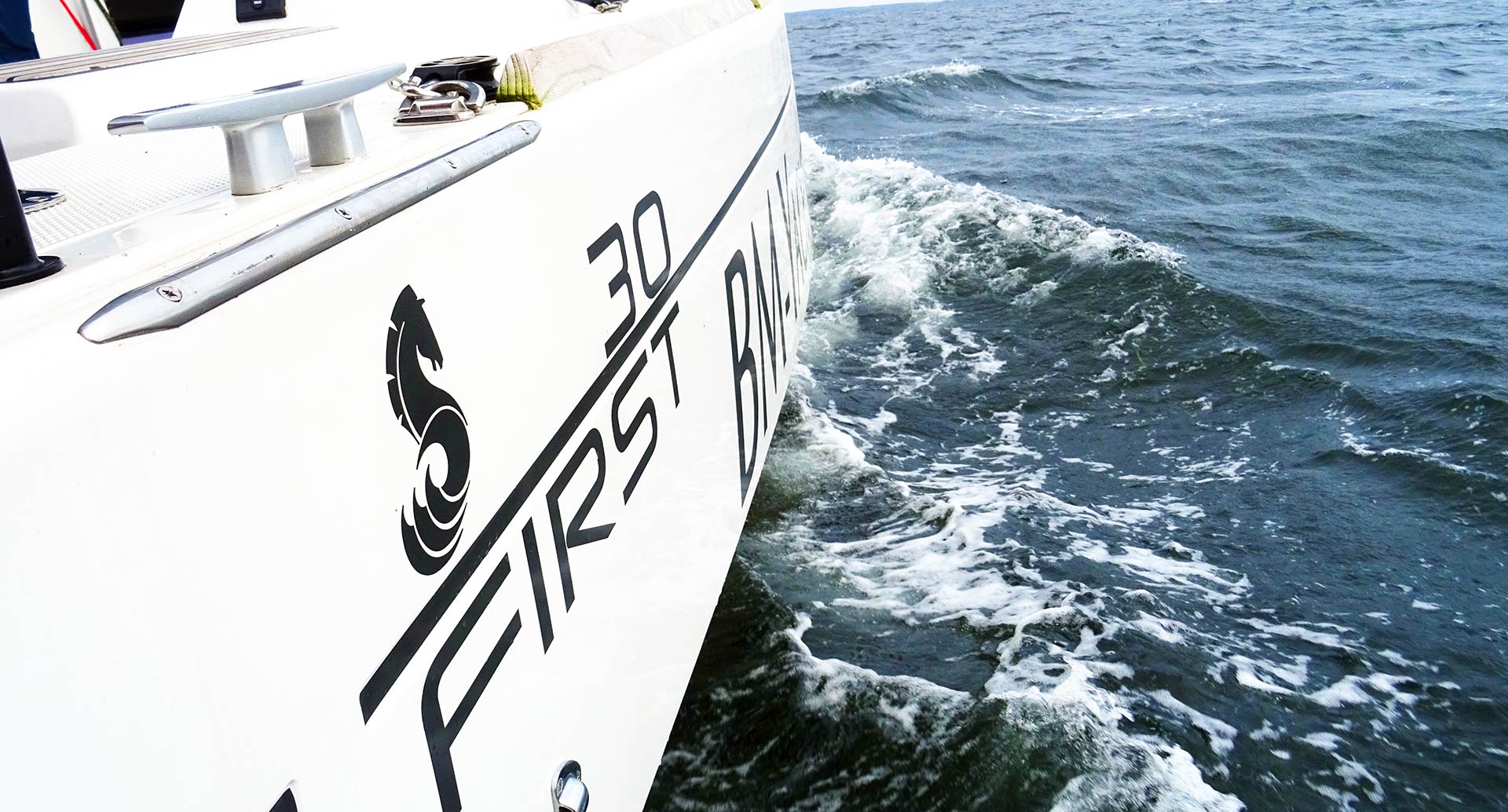
“She is a perfect little sprinter!”, my sailing mate yelled against the winds as he was handling the tiller to steer manually in order to get a feel for the yacht. Her maximum hull speed would be something around 6.97 knots and breaking this barrier constantly with speeds of well over 7 knots was sheer pleasure. “She is heeling over to one side and then she just sprints off!”, he yelled again: “Feeling so great!” I was pleased in seeing my sailing mate being happy with my choice. And I by myself was happy as well.
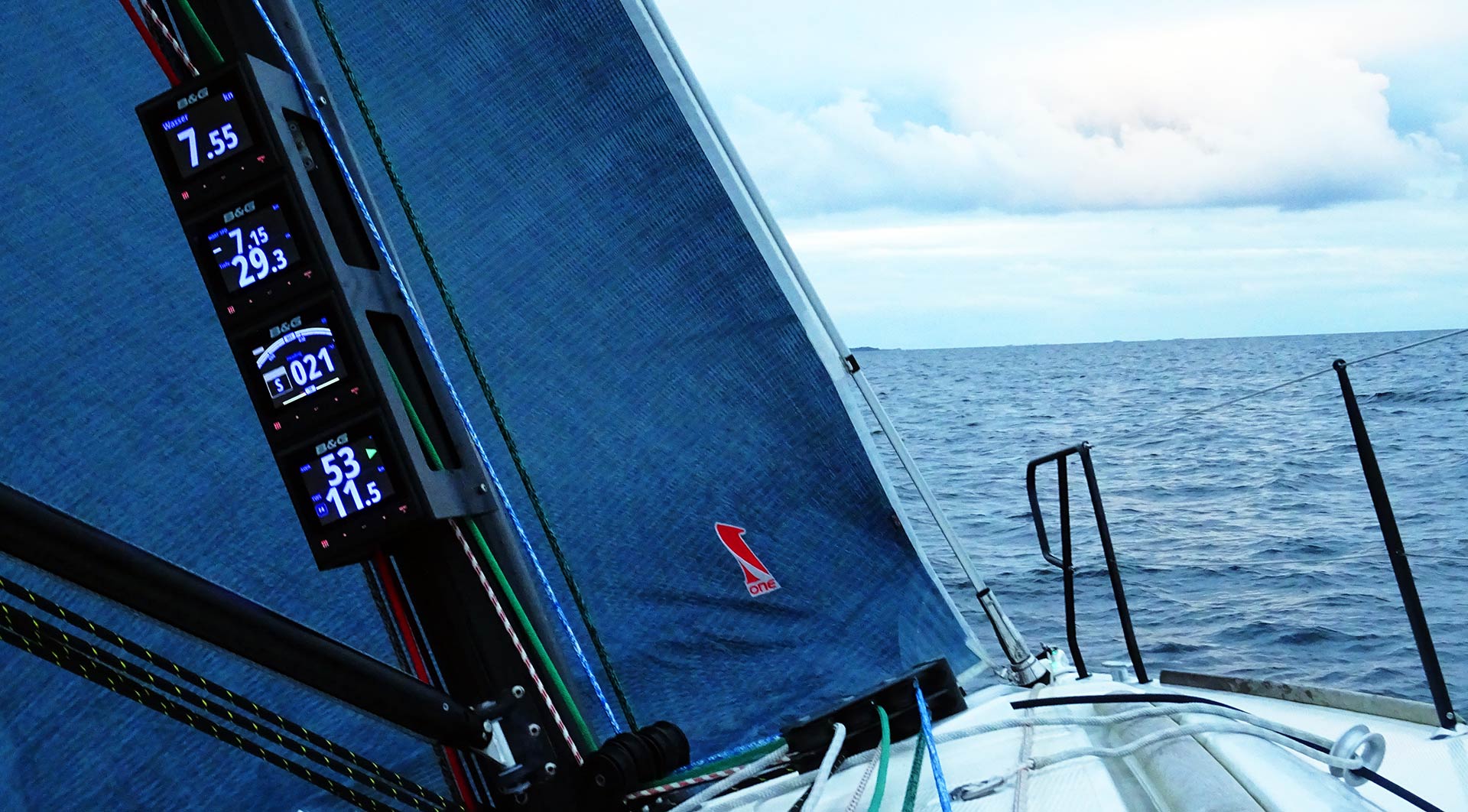
Of course, darker clouds had been lining up at the horizon concerning our trip. Originally I had planned to do a 20-hour fast dash all along the Danish coast up North to a small island called Anholt. This island is situated in the notorious Kattegat around the same height as the Swedish city of Gothenburg. But there were two things preventing my plan from coming true. One of the reasons I revealed to my sailing mate pretty early.
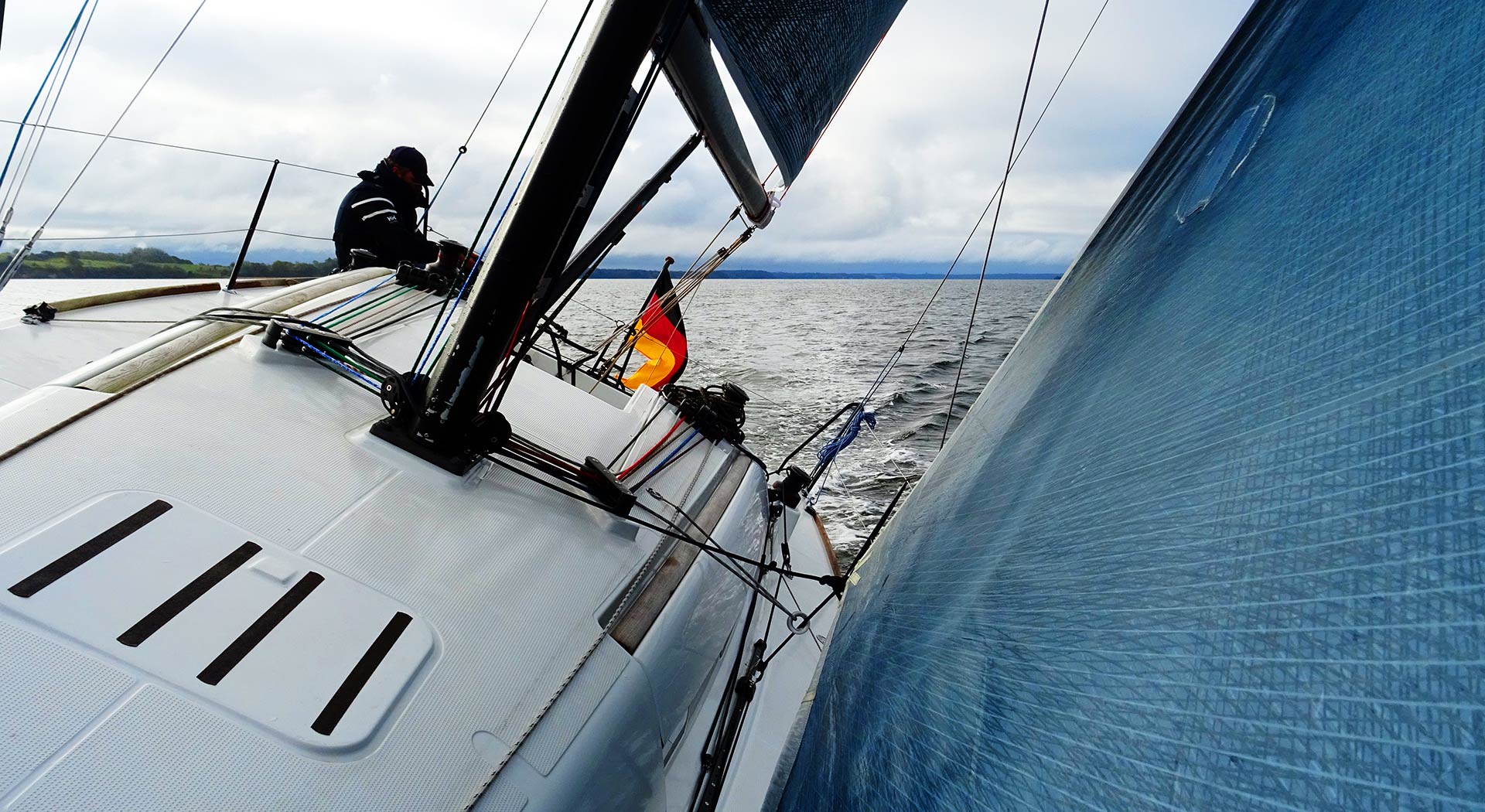
I said: “Concerning sailing 20 hours non stop … that´s cancelled. I injured my arm one or two weeks ago by carrying too much weight. Now I suffer from periostitis. Every move of the arm hurts like hell. I cannot even hold a cup of coffee without having pain. Let alone steer a boat or be responsible for a safe sailing passage during a shift alone. I just cannot.” I was so sorry. But my mate nodded and appreciated my decision. He was to add something too: “Sailing literally one-handed is one thing. The other thing is the weather. There are multiple small low pressure systems running all over Denmark in the coming week. We are expecting very strong winds and high swell. I think we could reach Anholt – but I am not sure if we could leave the island back for Germany in time. Too risky.”
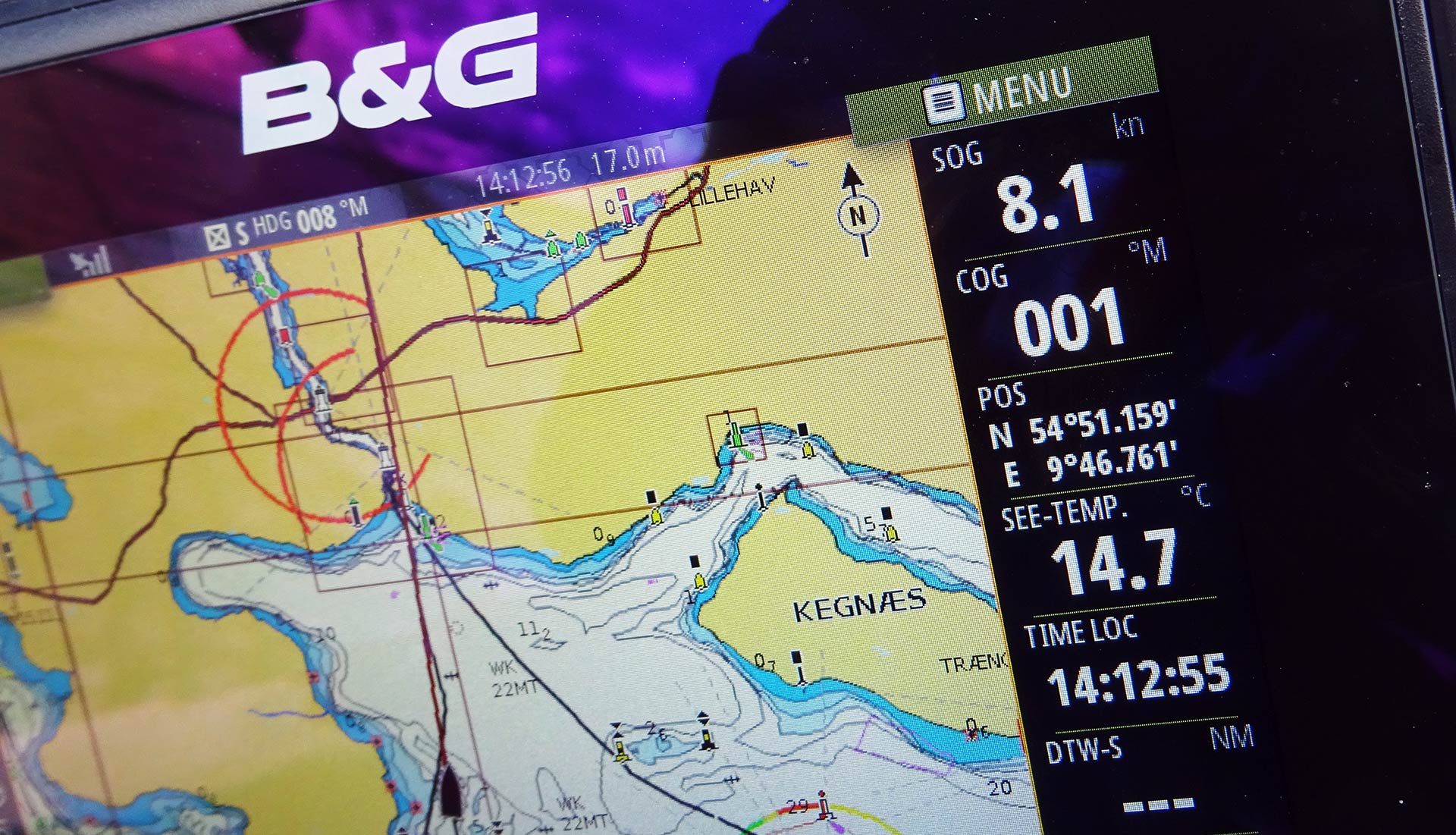
So my grief of not being able to set foot on Anholt lasted not very long. The boat was sailing just perfect and we flew the first 12 miles through the Flensburg Fjord as fast as one can get. We even overtook bigger sailboat and greeted a fleet of Danish sailing yachts filled with Navy cadets practicing the art of sailing. “New course due North”, I announced as we left the Fjord: “New course to Sönderburg.” A small Danish town I quite well remembered.
The sheer Pleasure of Inshore Sailing
The change of plan from sailing to Anholt and back into trying to sail around the large Island of Fyn was welcomed by my mate. He never did this trip and I was able to promise a good sailing adventure. I once did a sailing trip around Fyn last year on the Pogo 40 (read it here and here) and I very well remembered the nice mixture of open water sailing and a very stimulating experience of a kind of inshore sailing-like pleasure when going between the numerous islands through sounds and channels.
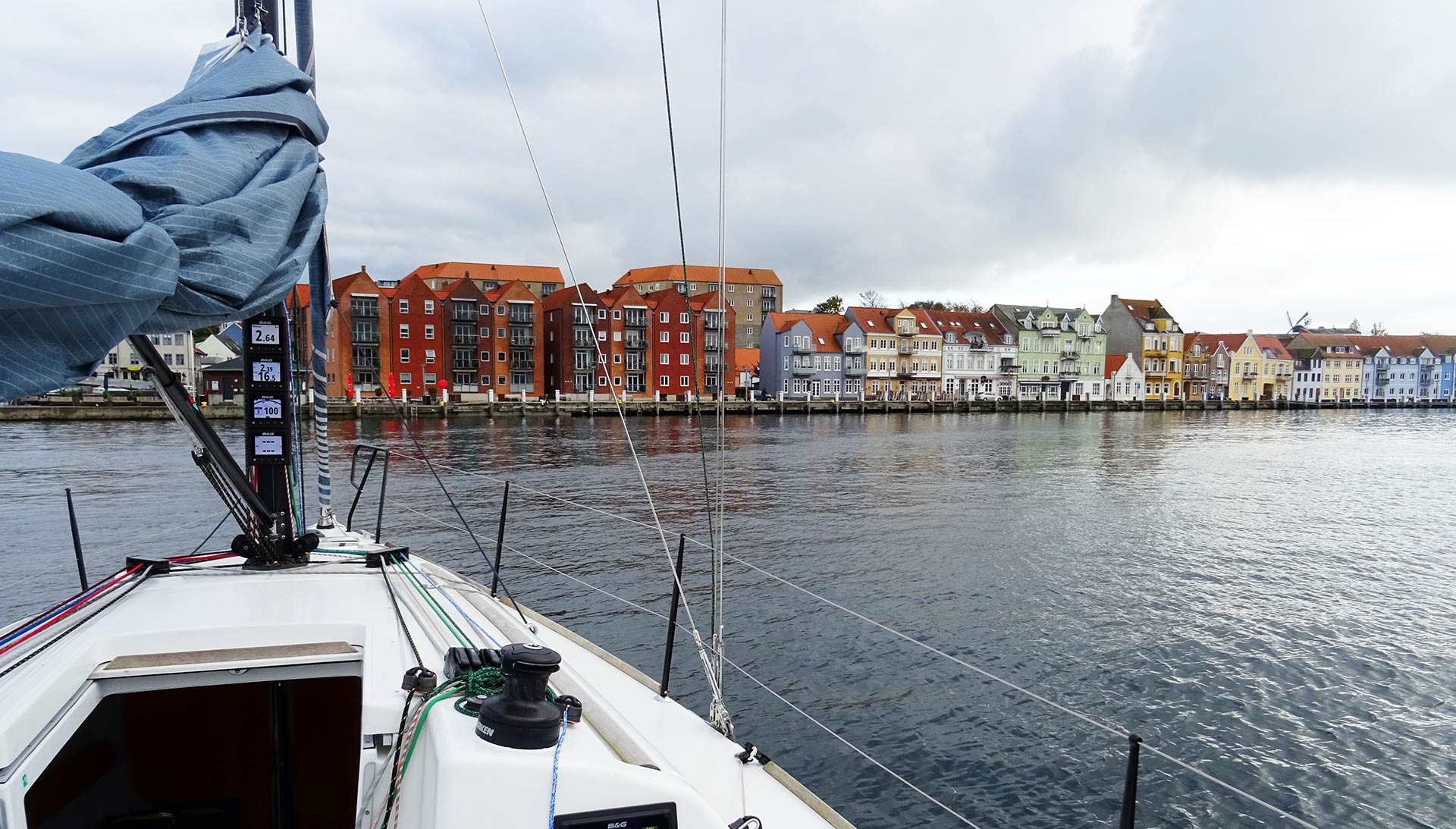
As we arrived in Sönderburg I checked the charts for the opening times of the bridge to enter a narrow channel, called the Aals Sound. Opening times are displayed on the bridge itself. It was 2.47 p.m. and the bridge said 3.01 p.m. “We are so lucky!”, I smiled, reduced speed and did three circles in the empty harbour, then the bridge opened and we slipped through. Sönderburg is the first Danish harbour for sailors leaving Germany in the Baltic Sea heading north – or the last before Germany. It´s not very far away from my home country, yet it feels so much different.
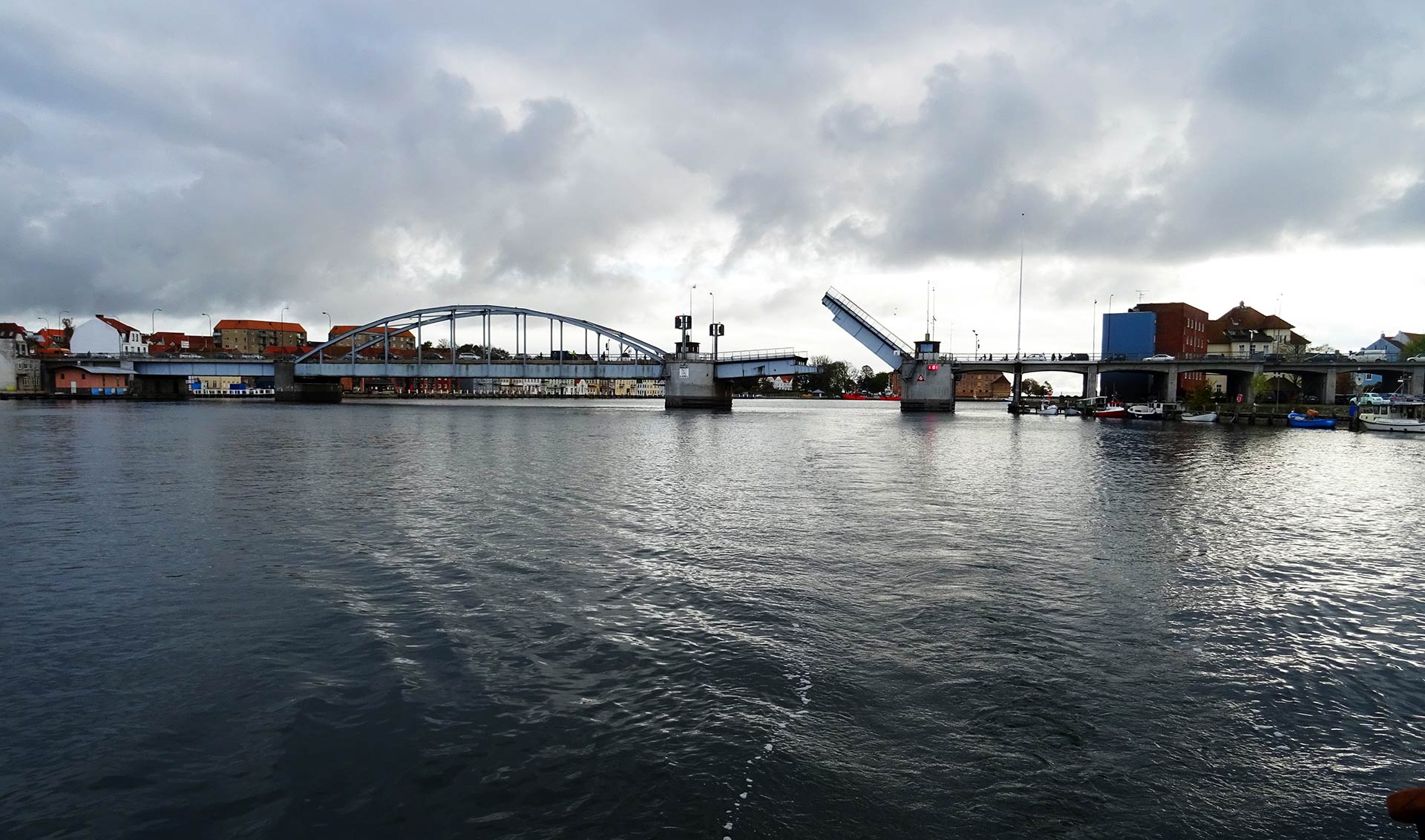
I am a great fan of Denmark, same as my sailing mate. We just love the attitude of the Danish people, their kindness, friendliness and openness. I´ve never ever experienced anything unfriendly or awkward here, I always feel welcomed, appreciated and people seem to be happy offering what they have to strangers coming and visiting their beautiful country. Everything is lush, things happen slower than in Germany. No stress, no pressure. Just life going on.
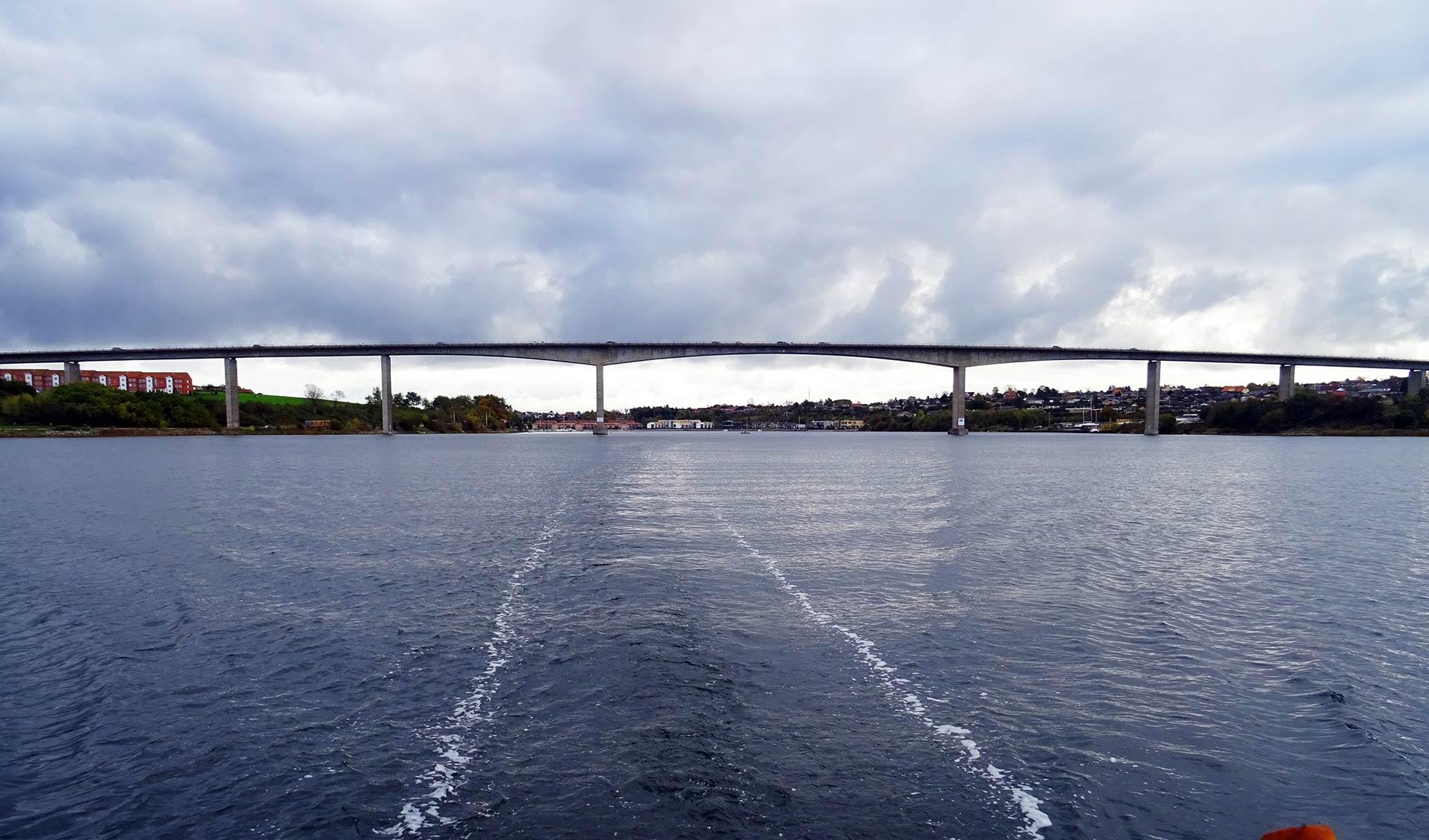
As we were steaming through the Aals Sound at just 4.5 knots I took some very deep breaths. Now the vacation time had really begun and although the clock showed that this first sailing day was drawing to an end ever so slowly, I wanted to catch these moments of tranquillity and peace. After a long period of stressful working in our very jobs, this was about just as perfect to calm down, get free a stuffed head and abandon all the worries and bad thoughts of our ordinary lives.
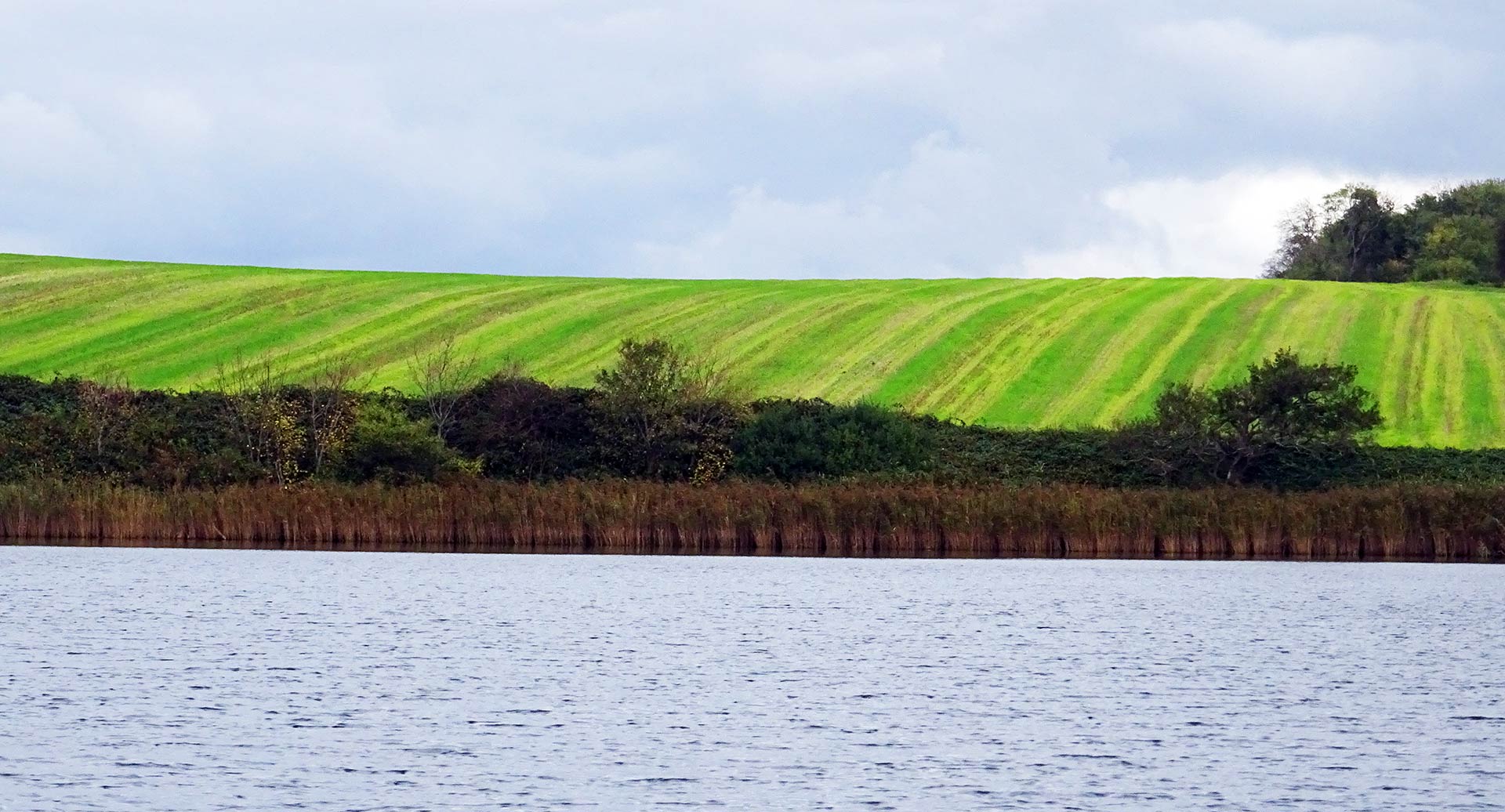
In Denmark people say something is “hyggelig” when they mean it is cozy, nice, snug. This could apply to a state of mind. Or a landscape. And steaming through the channel, leaving Sönderburg behind, opened up quite some nice views on a landscape that one hundred per cent met the definition of “hyggelig”. I found it strange to see so much green here around, couldn´t remember Germany being so green in late October?
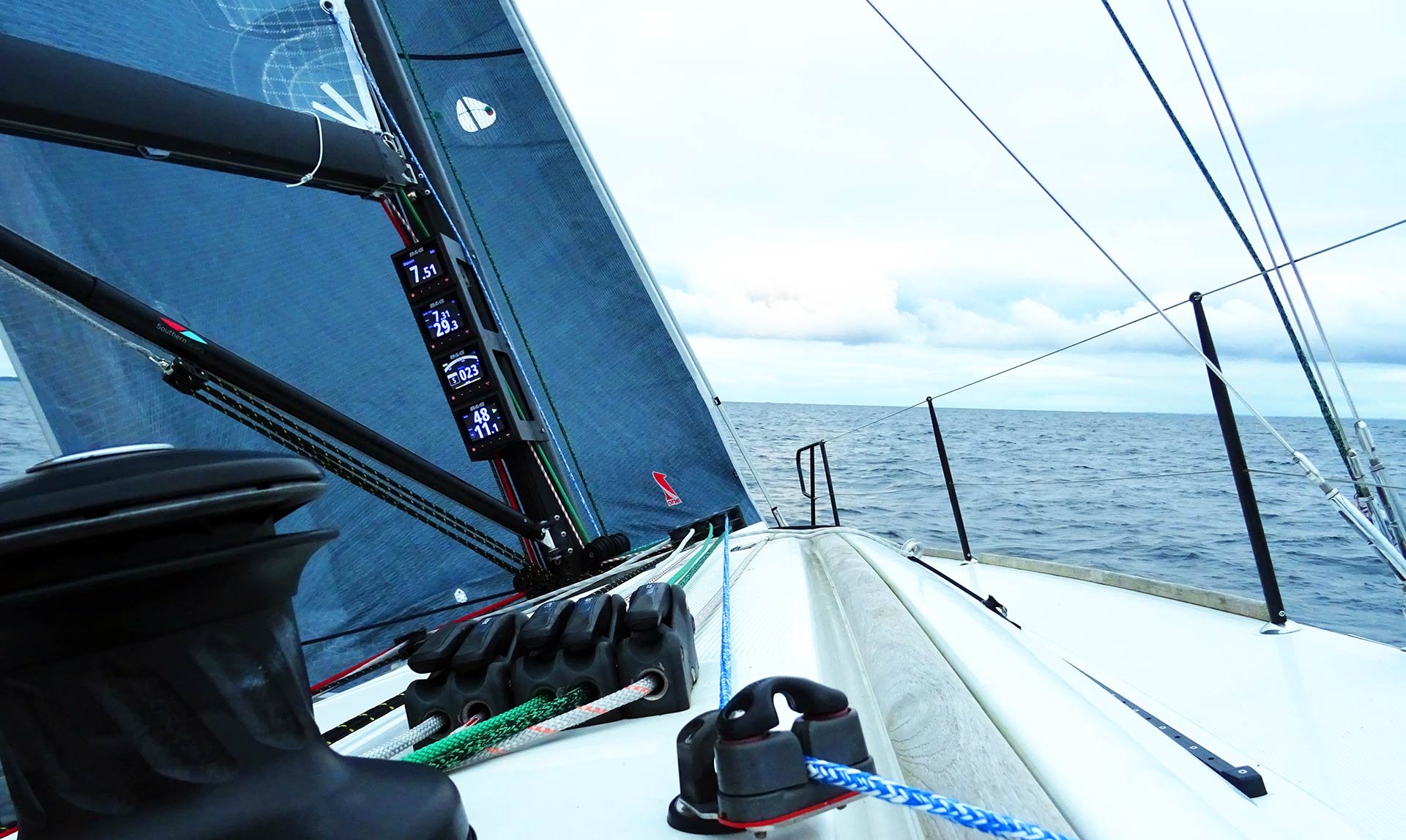
As we neared the exit from Aals Fjord we got some wind from starboard side and raised the sails again. The Beneteau First 30 doesn´t need too much wind to fire off. She sprung to life immediately and sailed well at around 6 to 7 knots. I found particularly interesting to observe how the nearby shape of the landmass was interfering with the strengths and the directions of the wind. Every cape, every hill, literally every tree even wide of the mark had it´s effect on the wind our sails were harvesting.
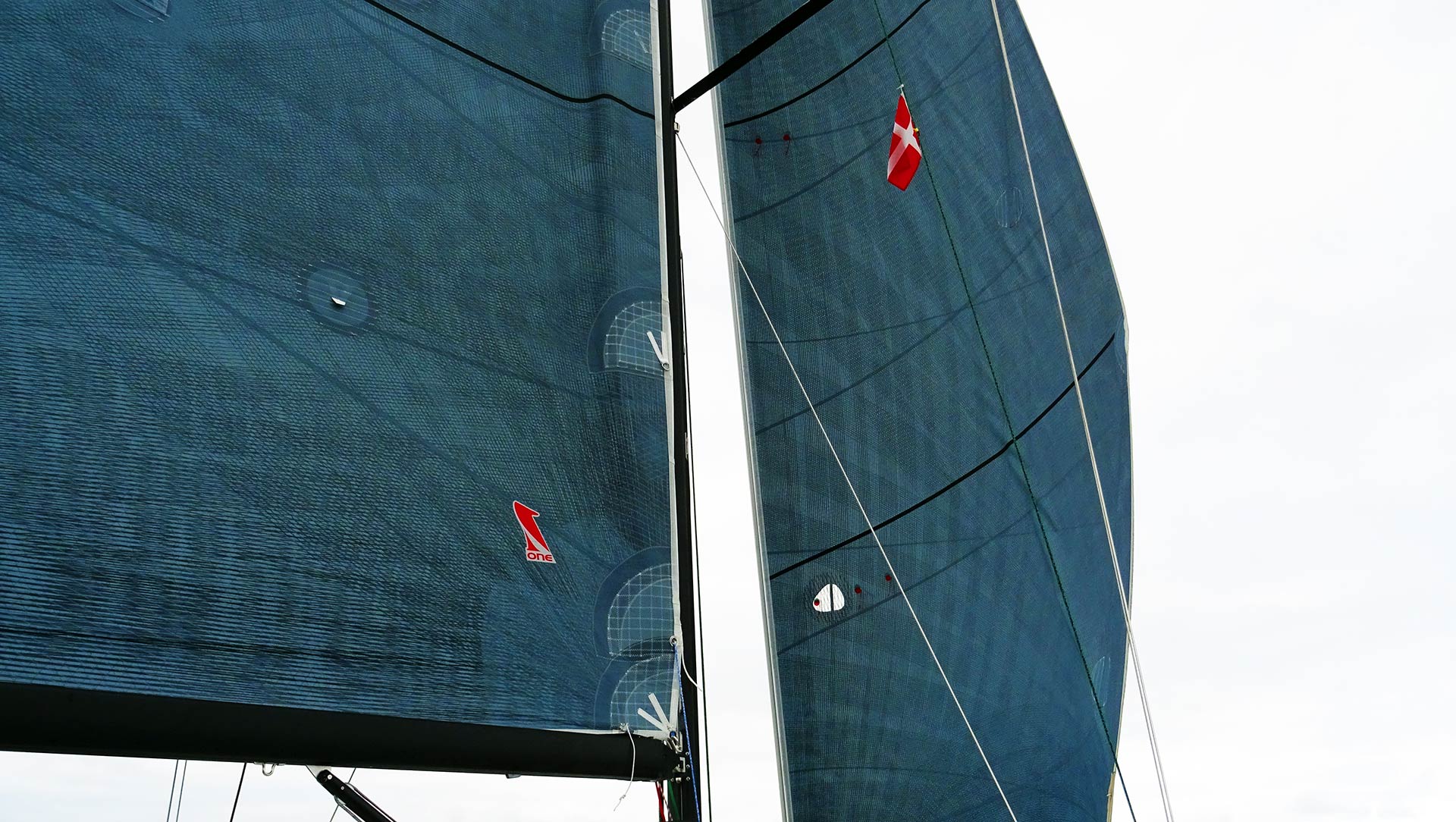
At the end of the inshore area we were sailing through we had to change course again to due North and got the wind from aback. I rigged our sails for butterfly position and steered by hand to try to have a perfect course in order to get the fullest energy on this course. Sometimes the fore sail was collapsing as the wind direction shifted, but most of the time I could have our sails filled just perfect. Without a pole. Nice fun.
Fast Sailing to the Island of Aarö
Something I particularly love about sailing is the fact that time seems to pass at a different pace. Five hours of sailing on a particular point of sail is a normal undertaking and the span of five hours – which is a huge time span in our jobs or at home – is a normal time count in sailing. Five hours is something that goes by just as fast as nothing when you sail. And so the sun was preparing to go down, changing her colour to orange. Later to red. The unmistakable sign of this day drawing to an end.
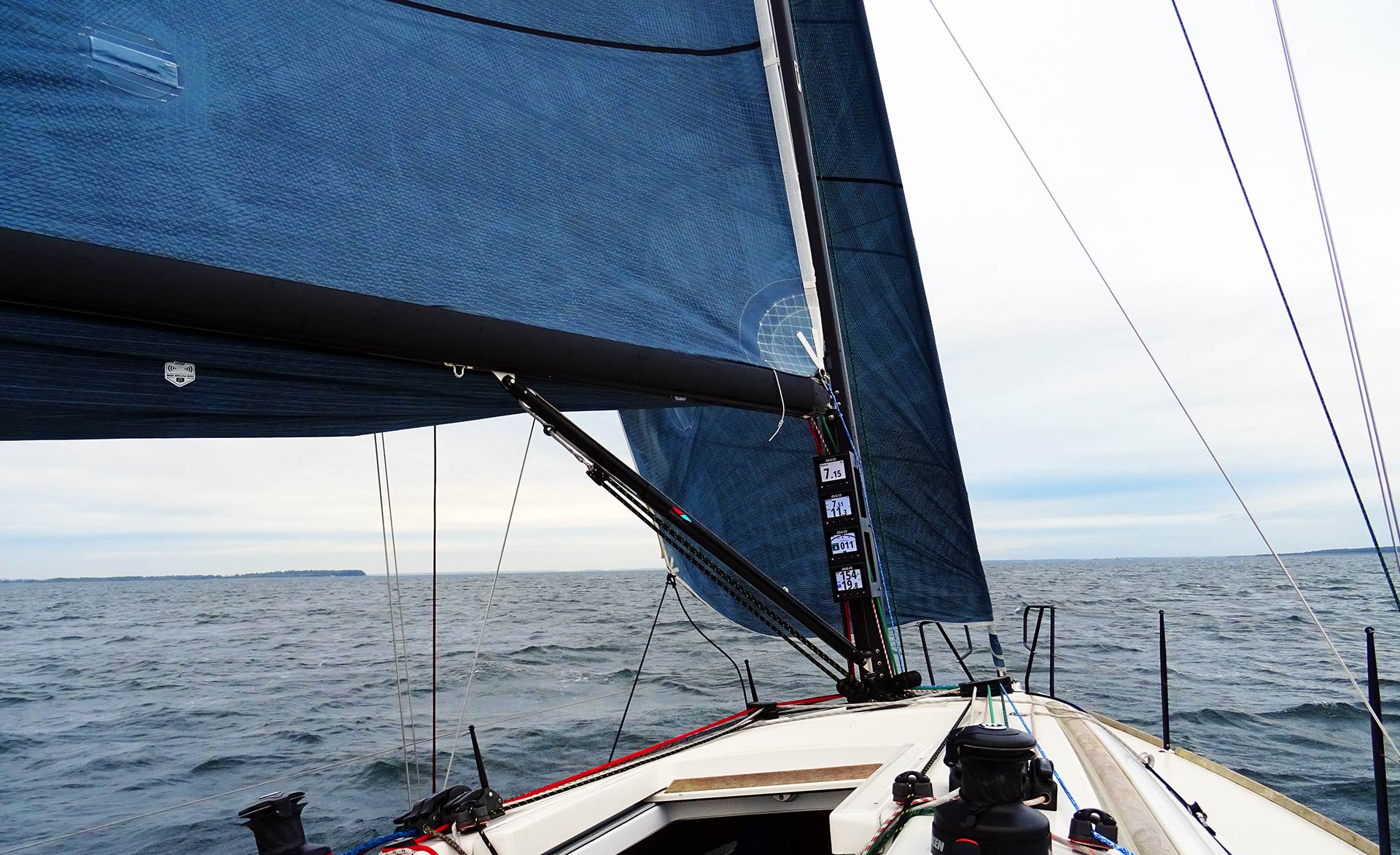
Nevertheless, we knew that we´d have some fun ahead still. Wind was freshening up from 10 knots TWS to 13 and 14 knots. I found the heeling getting too much and pressure in the shrouds caused the boat to shiver when another gust was pushing the yacht towards the 8.5 knots. As I saw my mate pulling harder and harder at the tiller to keep the boat on course, I decided to put in a reef in the main sail: “She´s heeling ever more. She can´t turn the power of the wind into speed anymore.” Reefing is a no-brainer with the Beneteau First 30 and a total of two to three minutes later the first reef was put into the main and I further furled in the jib.
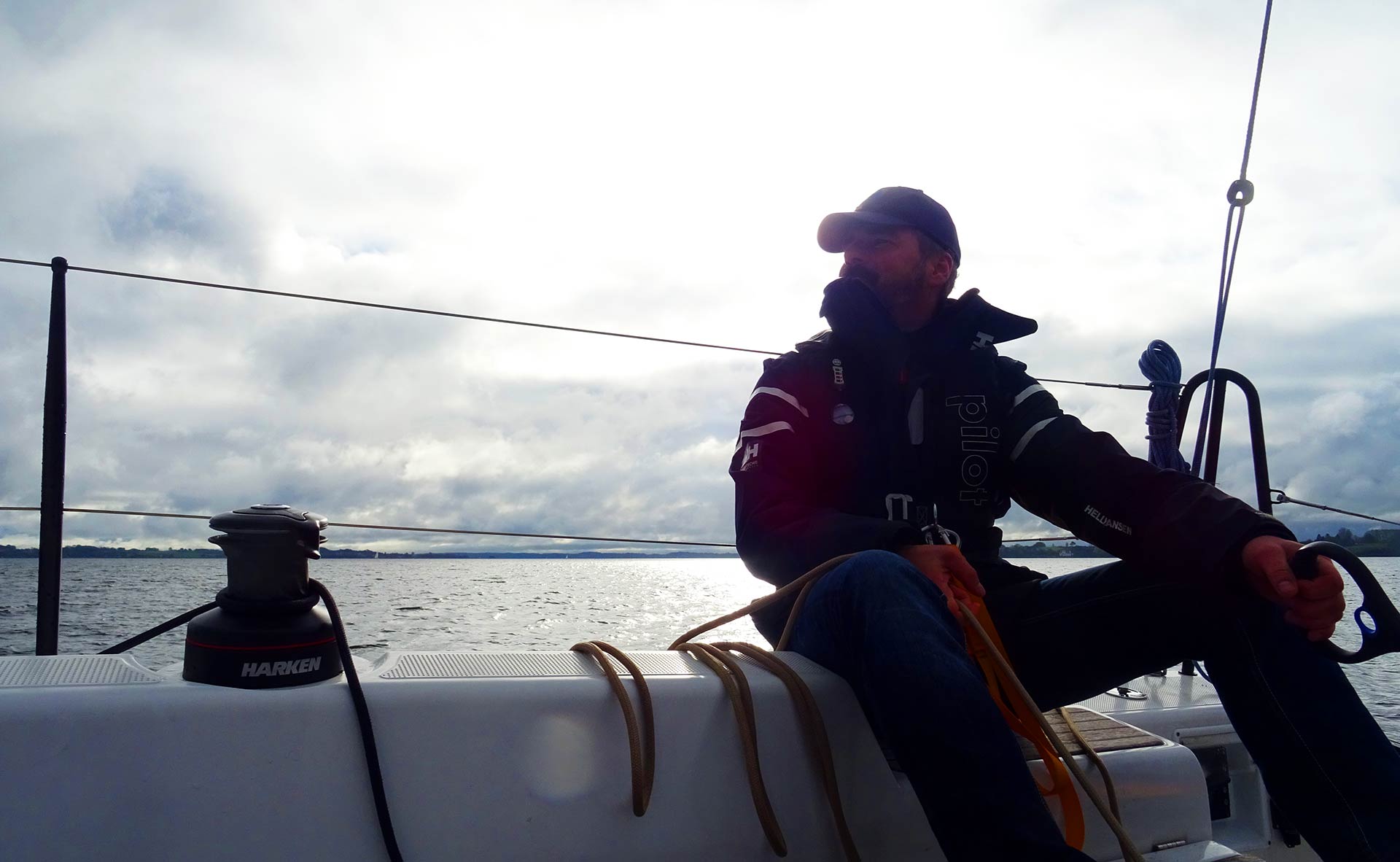
As a professional sailor and passionate about sailing, it was my impression that my mate at first kind of disagreed the decision to put in reefs: As I told him that the boat just wasn´t going to get faster but only heel ever more without producing more speed, he kind of reluctantly agreed to put in reefs. Now, as he was back on the tiller, he smiled and nodded: “You were right: We are just as fast as before – but the boat is now more upright and there´s considerable less pressure on the rudder.” Well, as predicted.
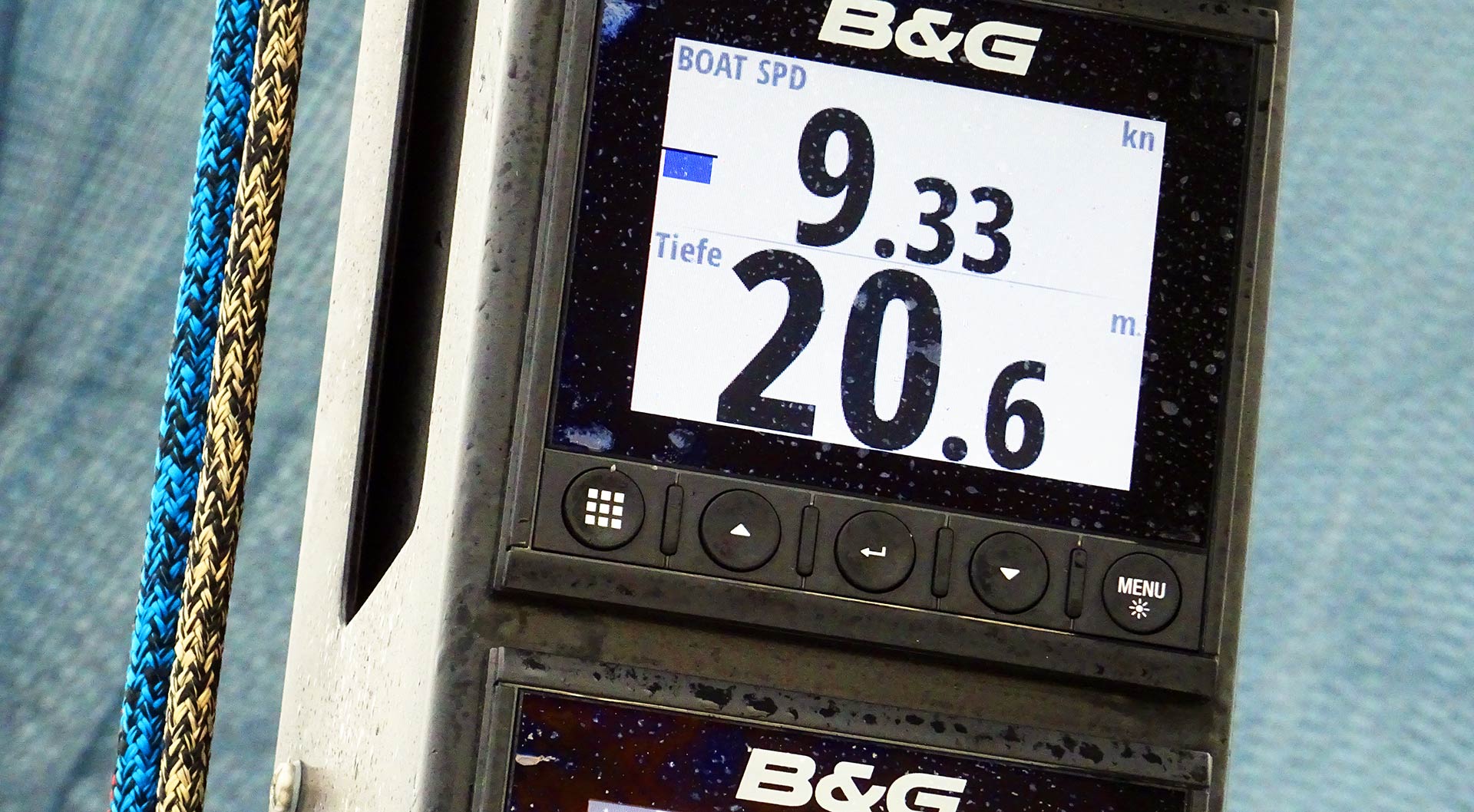
So our boat jumped to new life and we crossed the larger area between the Islands of Als and the Little Belt at around 9 knots. The winds git fresher ever more slightly, the sun again began to sink and I calculated our ETA at around 8 p.m.. Which wouldn´t be a problem if there wasn´t for a heavy fault in the equipment of our yacht – and my mate soon made me think hard of it.
Landing in Aarösund
“Lars, we will get a problem”, he began a conversation and tore me from my daydream of the wonderful dawn unfolding in the West: “See, we don´t have any light on deck, we don´t have a handheld light – nothing at all! It will be pitch black dark soon. If the marina isn´t illuminated, this is going to be a serious issue.” And he was right: As our First 30 was rigged to be a performance-only boat, there wasn´t a deck light mounted at the mast.
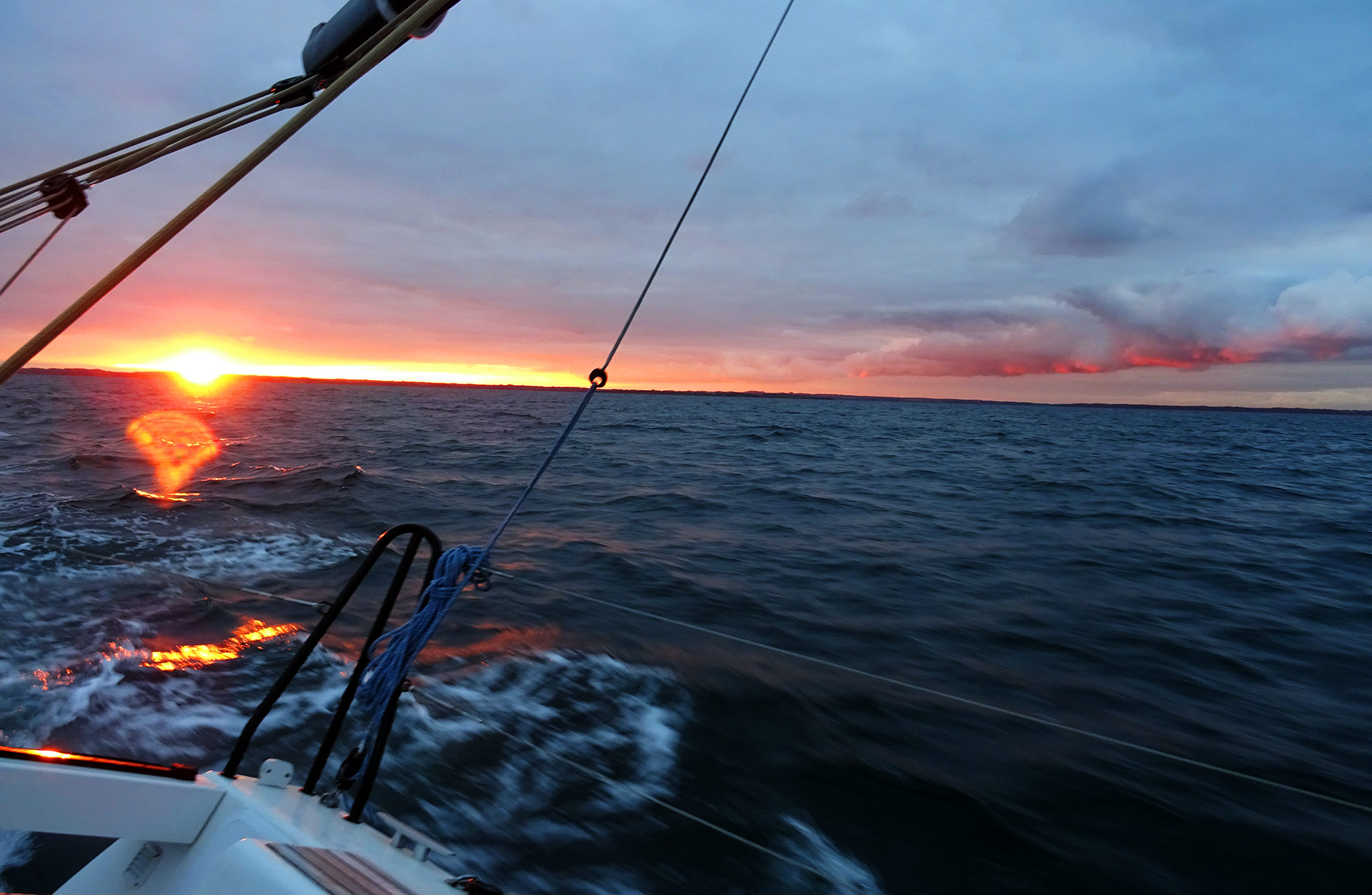
“I´ll go to the cabin and check if I brought a light by myself”, he said, handing over the rudder controls. After some minutes he reappeared with a small LED-lamp. “This is totally unacceptable and not good seamanship”, he stated and he was right. When we took over this boat we knew that there was serious shortage of almost every safety-related item on the boat: No life raft, no stern-mounted MOB-inventory of any kind, no lights, no pyro-signals – no nothing. This boat was meant to be as light as possible as they only use it in daytime regattas – but it was totally insufficient equipped even for a shore-sight cruise like ours.

As the sun went down with grace and flooded the Little Belt with a multitude of red, orange and violet colours, minutes later the sea was dark as predicted. Only the buoys showing the entrance to the small channel of today´s destination were glowing in the dark. The wind eased a bit but remained at around 14 knots TWS. I checked the plotter for which marina to enter. There was the small island of Aarö to starboard side with a small marina and some mile away the marina of Aarösund, kind of bigger. “I´ll go for the bigger marina”, I decided hoping to expect better lighting and facilities. We took down sails, started the engine upon reaching the narrows and I set the plotter to maximum zoom. Entering the marina was of no problem, my mate got slightly confused by a larger fishing vessel mooring directly in the entrance to the basin for yachts, but I knew the small channel and found my way. He tried to light up the scene with his tiny light, but we were lucky to find the whole harbour illuminated. I let the yacht drift onto the head-pontoon of a completely empty harbour. We landed at our first port.

It wasn´t until next morning when I checked the situation at daylight that I saw how narrow the whole thing has been. The passage way between the large fishing trawler anchoring right in the channel to the harbour and the rocky breakwater wasn´t wider than 3 meters. No problem for our small Beneteau, but given the considerably string winds and the possibility of getting a push and set adrift, it felt not too safe. Anyway, we slept a very deep good night´s sleep and had a fine breakfast of scrambled eggs, bacon and baked beans in the morning.
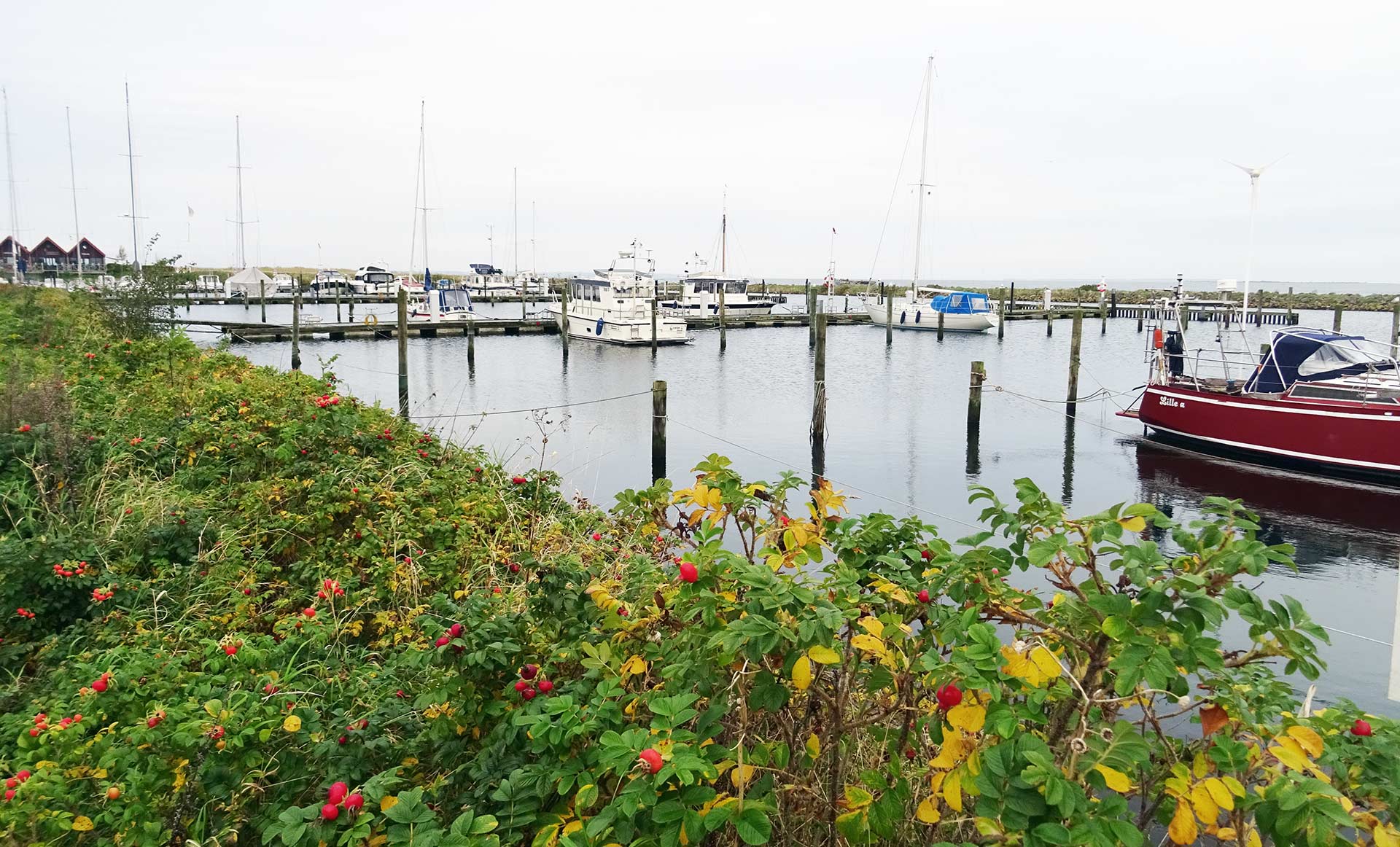
“Notice the lush green!”, my mate said pointing to the trees: Back down in Germany almost all trees have already lost their leaves after getting them brown. Here the leaves still were green and in fullest bloom. “Maybe the warm temperatures accumulated and distributed by the Baltic Sea.”, he speculated. But yeah, just when he told me I also got fully aware of this awkward sight.
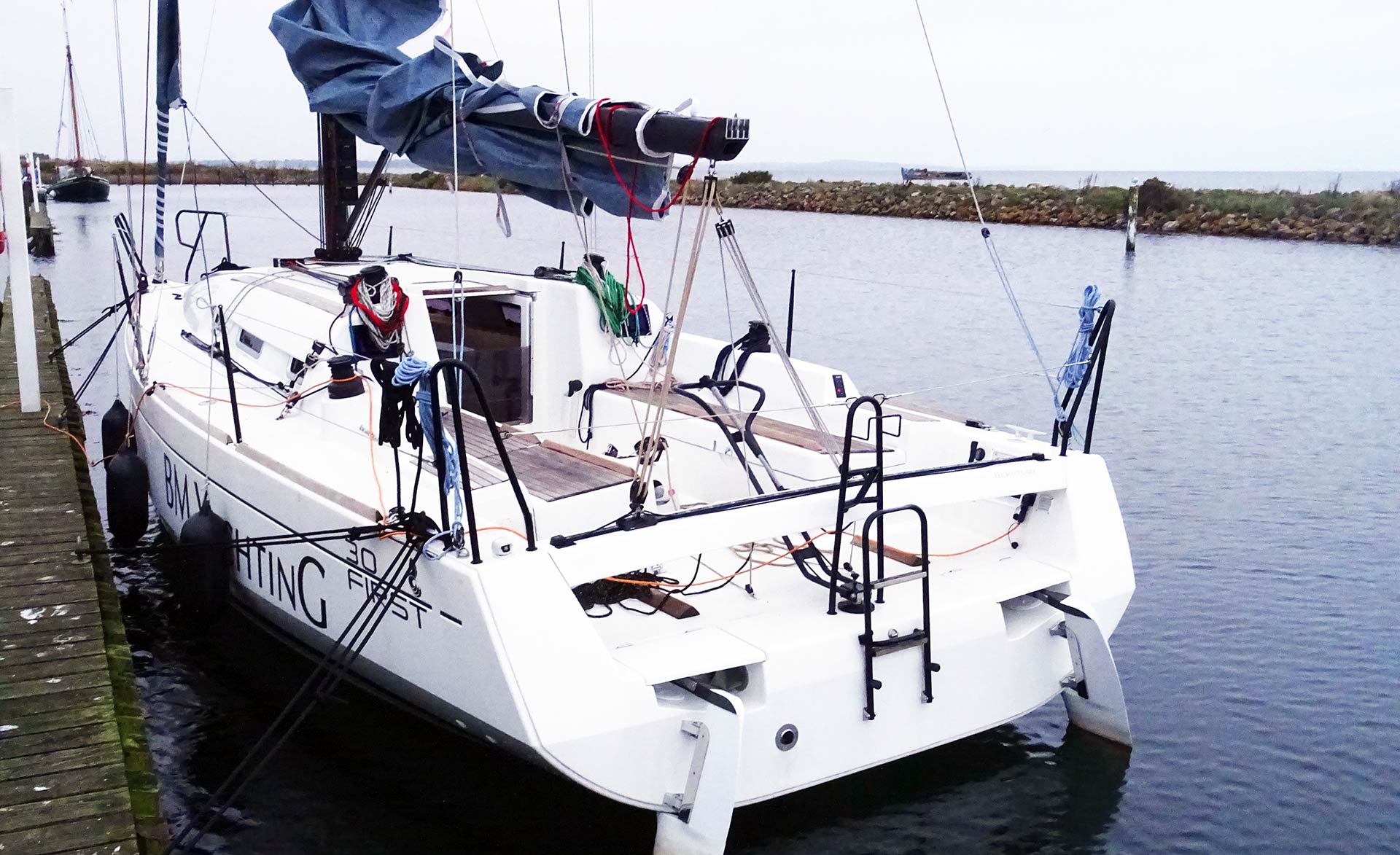
One good thing about a boat that small and that sparsely equipped is that it takes almost no time to get ready for casting off. It´s literally a matter of minutes because there´s nothing to clean, get stowed or stuffed away. After we learned that all amenities of the harbour have been shut down already (no chance to get a hot shower), we readied the boat, got dressed and cast off at around half past ten. Very lush.
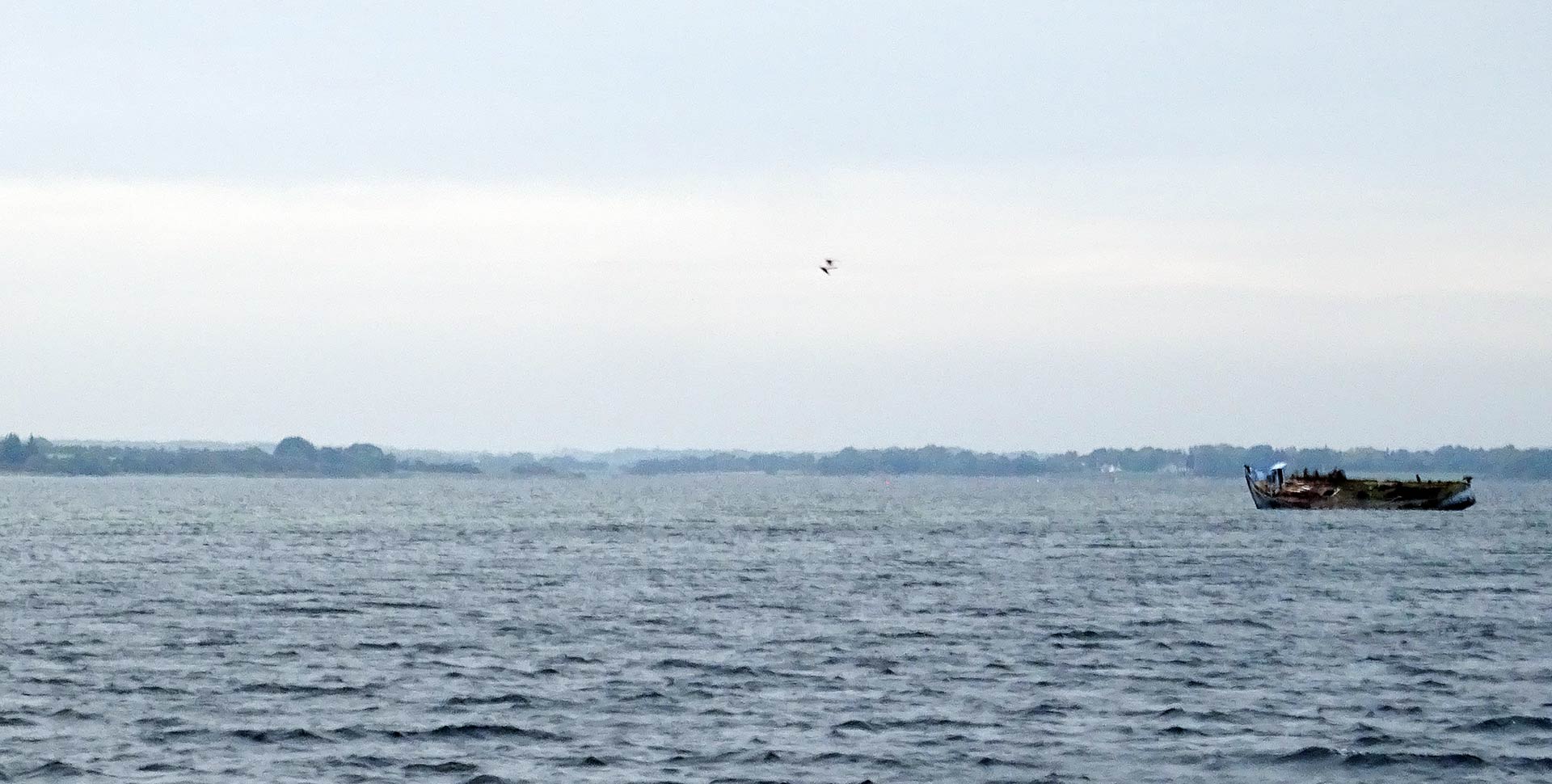
Steaming away from the Island of Aroe I noticed a wreck not afar sitting almost dry in the middle of this bay area. “Let´s stay right in the middle of this channel”, I reckoned remembering our considerably deep draft of 2 metres. Today´s first leg of the trip was a short dash across the Little Belt to the very narrow channel of Middelfart, which with the help of a nice fresh wind took us no longer than two and a half hours.
Middelfart and a quick Dash to Samsö
The boat was taking off again although I didn´t put out the first reef. Still blowing at around 14 knots true I felt sailing with first reef set in quite sufficient and when the boat was again breaking 8 knots SOG I was affirmed by the circumstances that this was the right thing. Everything seemed perfect this morning and I went down to prepare a second breakfast – a thick and rich clogged whole meat bread with a load of sausage and green cucumber.
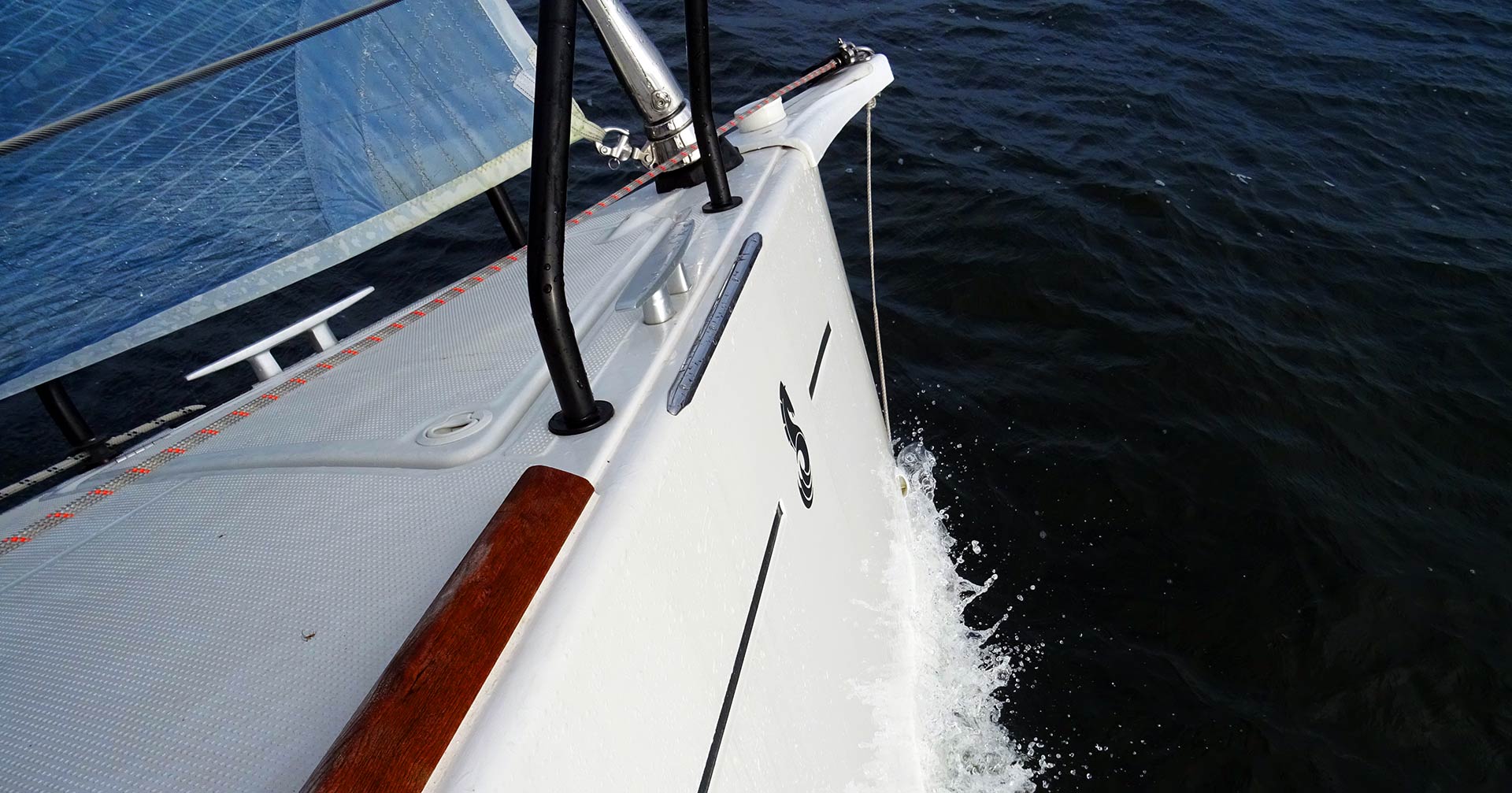
We sat on the reeling side, the auto steering was conveniently holding our course and the land mass of the large Island of Fyn was growing ever so slightly over the horizon. Almost no waves were hampering our efforts, even a bigger freighter coming up from abaft wasn´t all too faster than we had been. A perfect sailing experience for sure.

Middelfart is the westernmost city of Fyn and connected to the Danish mainland via two large bridges. The channel between Fyn and Jutland is wide and deep enough to let through larger commercial traffic and leave more than enough space for yachts. There´s a strong current of up to 3 knots going North (luckily our direction as well) pushing us through. But also creating hazardous swirls at the corners and small capes. So I steered clear from the shore line.
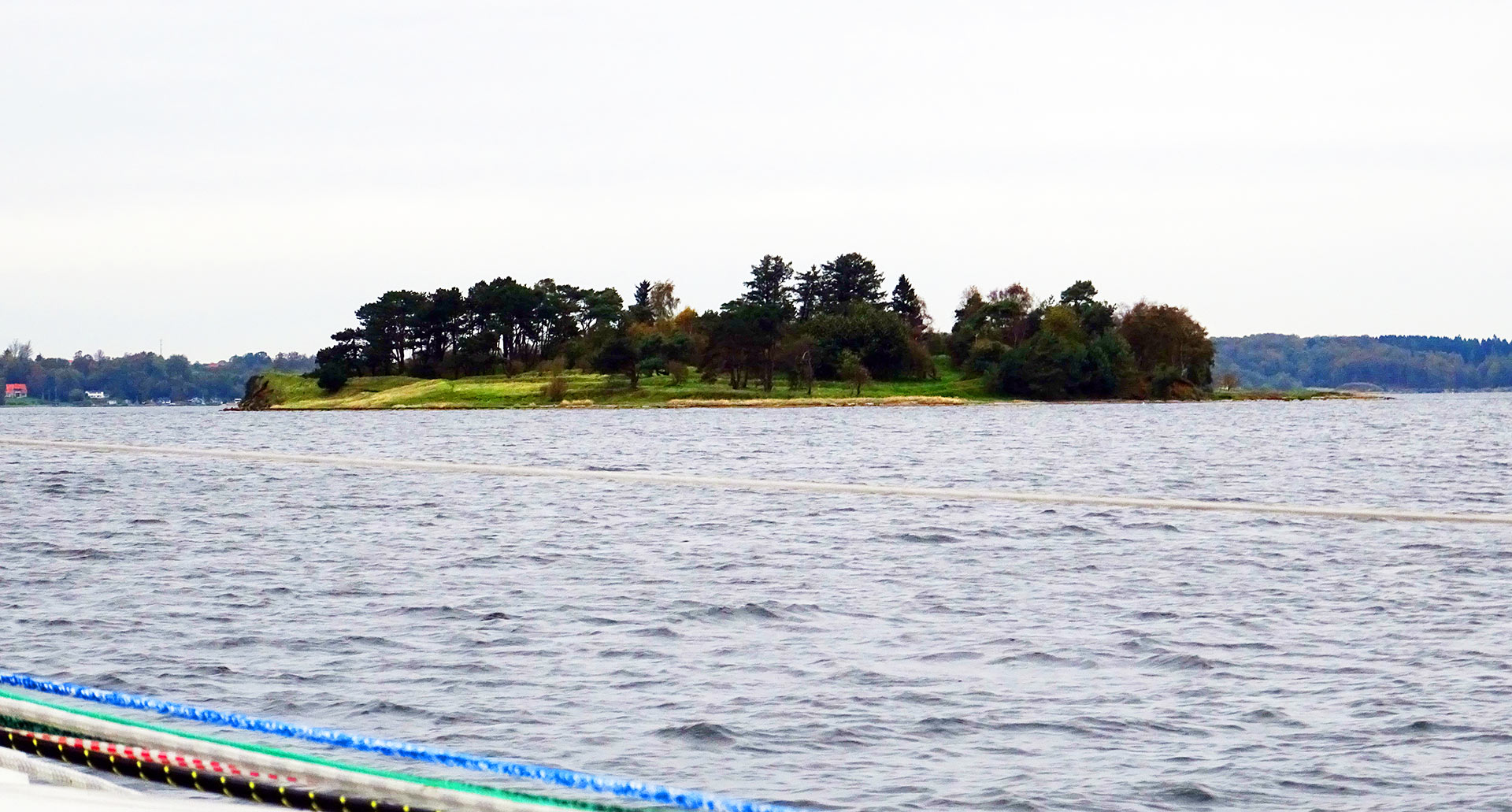
Sailing could have been possible but it would have meant a constant concentration on local changes of wind patterns within this narrow area. To spare us from this stress and the other ships from keeping a lookout to the sailing vessel, we took down the sails and started the engine again. With 6 to 7 knots, assisted by the currents, we steamed through the town of Middelfart and passed the first (smaller) bridge.
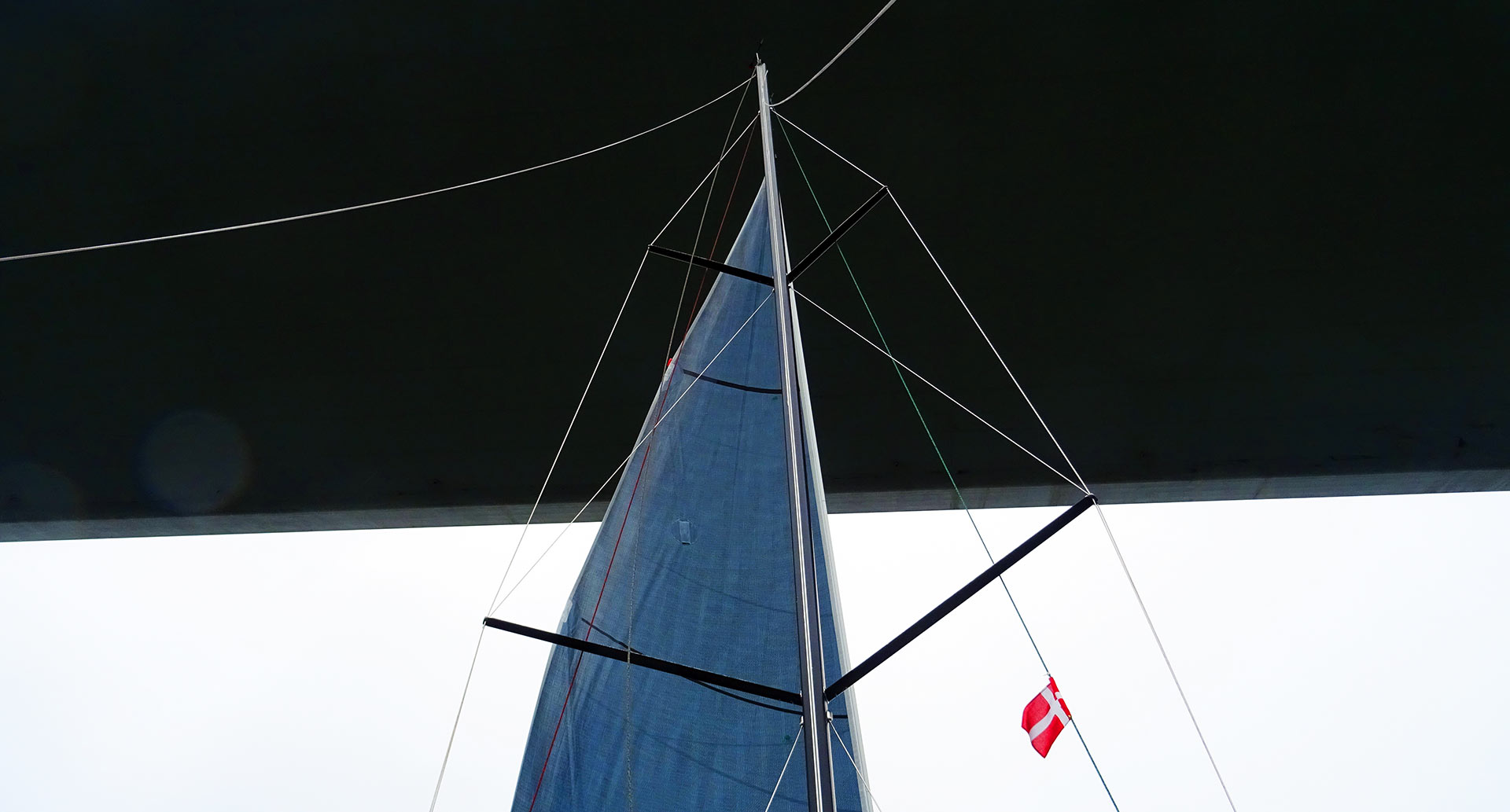
The wind changed to come right from abaft and the narrow channel opened up: “Let´s take out the jib at least”, I decided. My mate agreed instantly: “This is a sailing vessel, of course!”. By unfurling the full jib the boat instantly jumped to life. So fast, that I was able to kill the engine and sail solely by jib power. “Before we set main, I´ll go and relief myself …”, I stated heading for the front “cabin” of the small Beneteau.
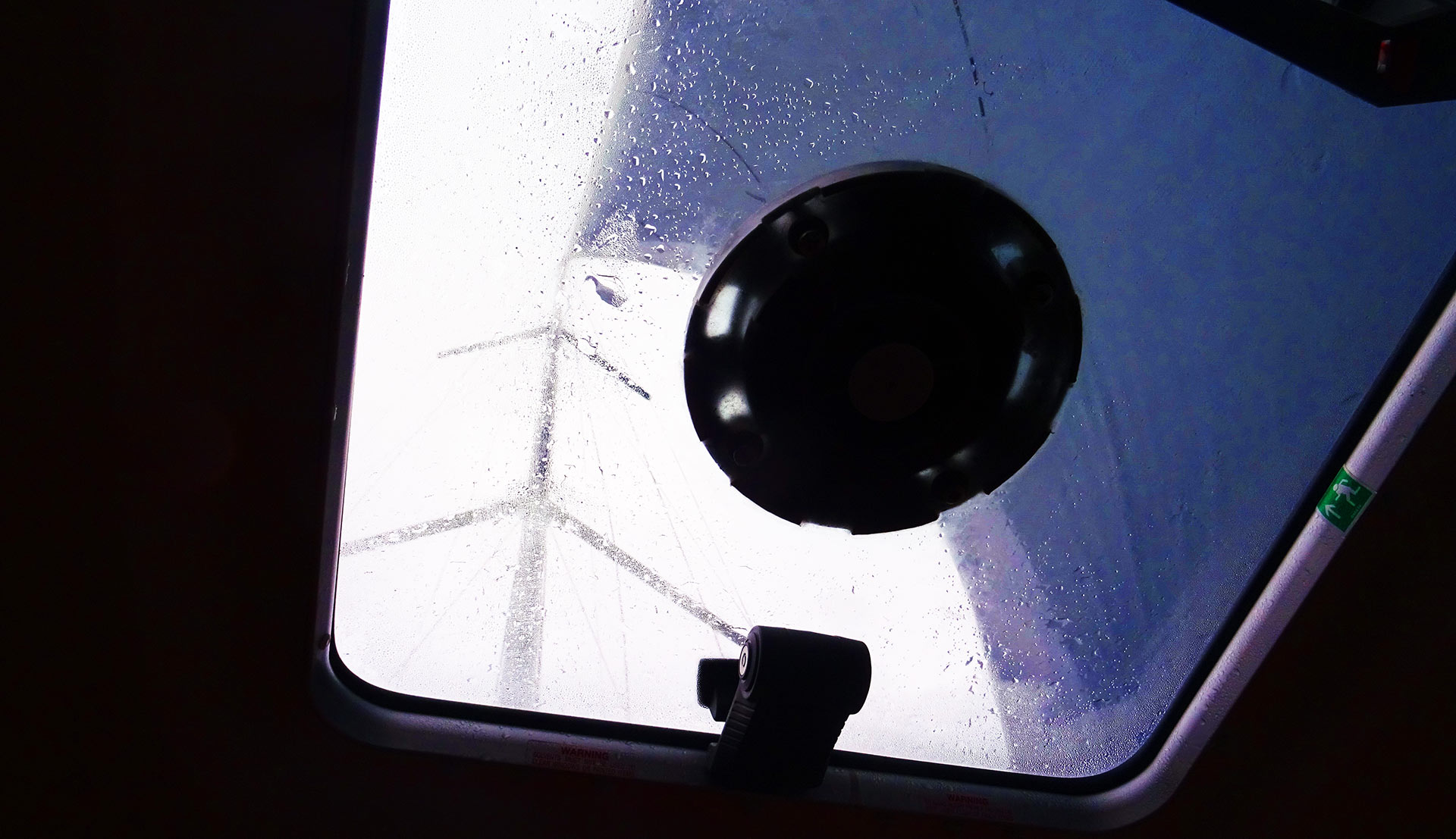
Sitting here was a joy. The glaring yellow curtain was producing a fresh and loud nice colourful ambience in this cabin, sitting on the toilet I did have the escape hatch right over my head. So I just had to raise my eyes to get a very beautiful sight onto the front of our mast with the nice One-Sails laminate jib unfurled in full bloom over me. As – for a short moment – the sun came through the thick autumn clouds, the sail was illuminated in a glowing blue colour, which was exhilarating to watch. I loved it here. Well, later, it turned out to be a real paint in the ass having to take a dump here in heavy swell …
Bad Weather approaching: Storm Tactics
Our mood changed quickly over the coming hours. Right after turning starboard towards our destination of the day – the Island of Samsö – wind freshened up to 18 knots true and we quickly put in the first reefs again. My mate, blatting with himself for having waited too long, also went down to the WC leaving me alone at the steering. Then the first gusts with way over 20 knots hit the boat. I couldn´t hold her closed to the wind and constantly had to release the main to get out the wind´s pressure. I was shouting for my mate: “Second reef!”
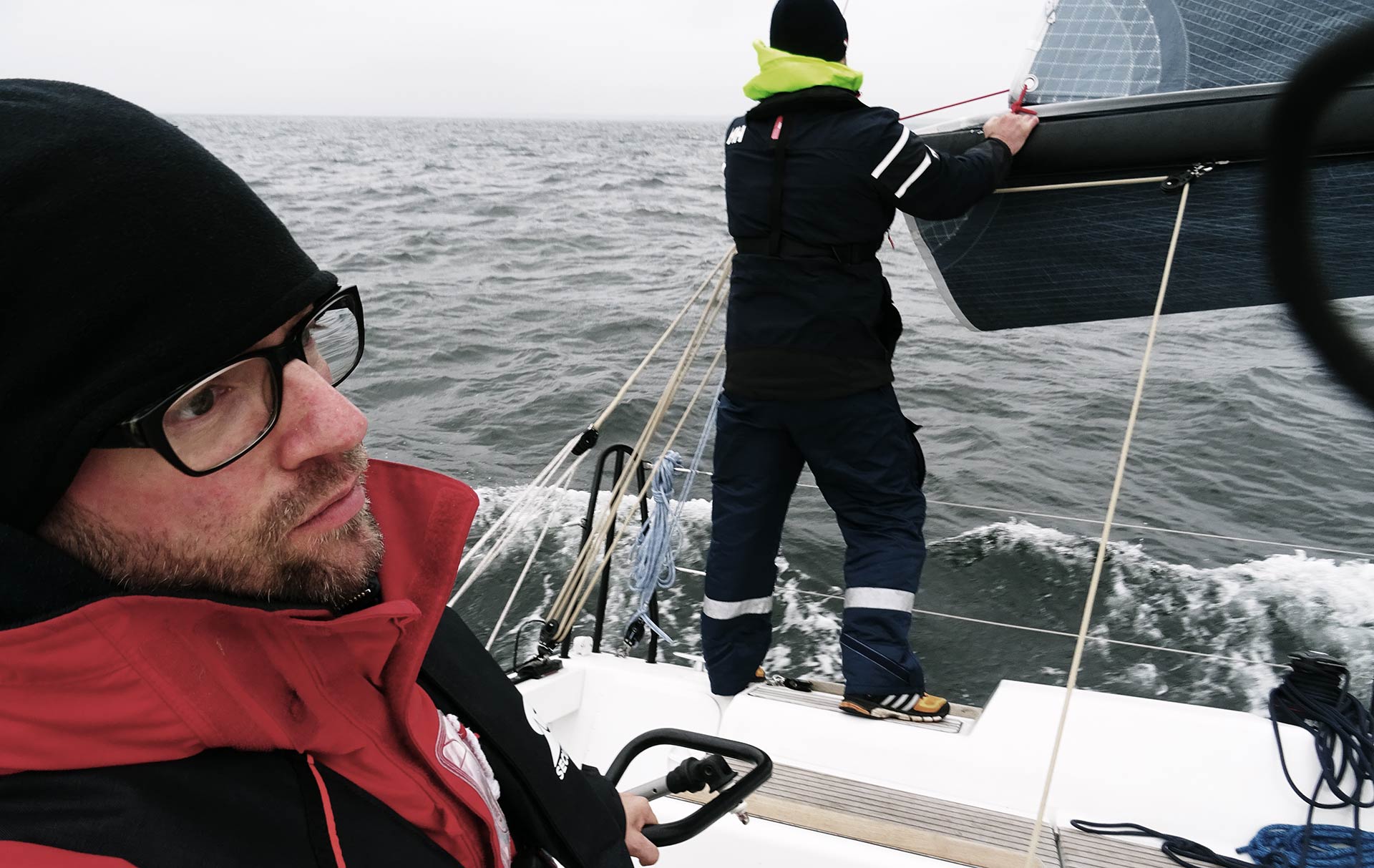
The boat was sprinting through the ever building waves and we first furled in the fore sail to stormsail-size. I started the engine, put the boat into the wind and readied the boat for putting in second reef into the main. “Main sheet and rodkicker are released!” My mate went to the mast and I slowly gave way for the main halyard, taking down the main sail. He quickly managed to get the solid metal ringed-reef point into the hook at the gooseneck, I tightened the halyard again. Then I went to the clamps and pulled the “second reef”-line hard. But it was tight. I double checked the clamps, the free running of the lines, pulled again: Nothing!

Wind was blowing hard, the boat heaving heavily into the waves, now constantly as high as one meter (very big for a boat that small). Wind was howling, boom was spinning free in the cockpit, all sorts of cling and clang of loose lines. I screamed into the wind: “Something is wrong with the second reef!” But I couldn´t get where the fault was. I looked it up carefully again – it had started to rain in the meantime – from the winch, the clamps, all blocks, the mast, the boom, the boom head and … there it was: “Oh fuck!”, I screamed.
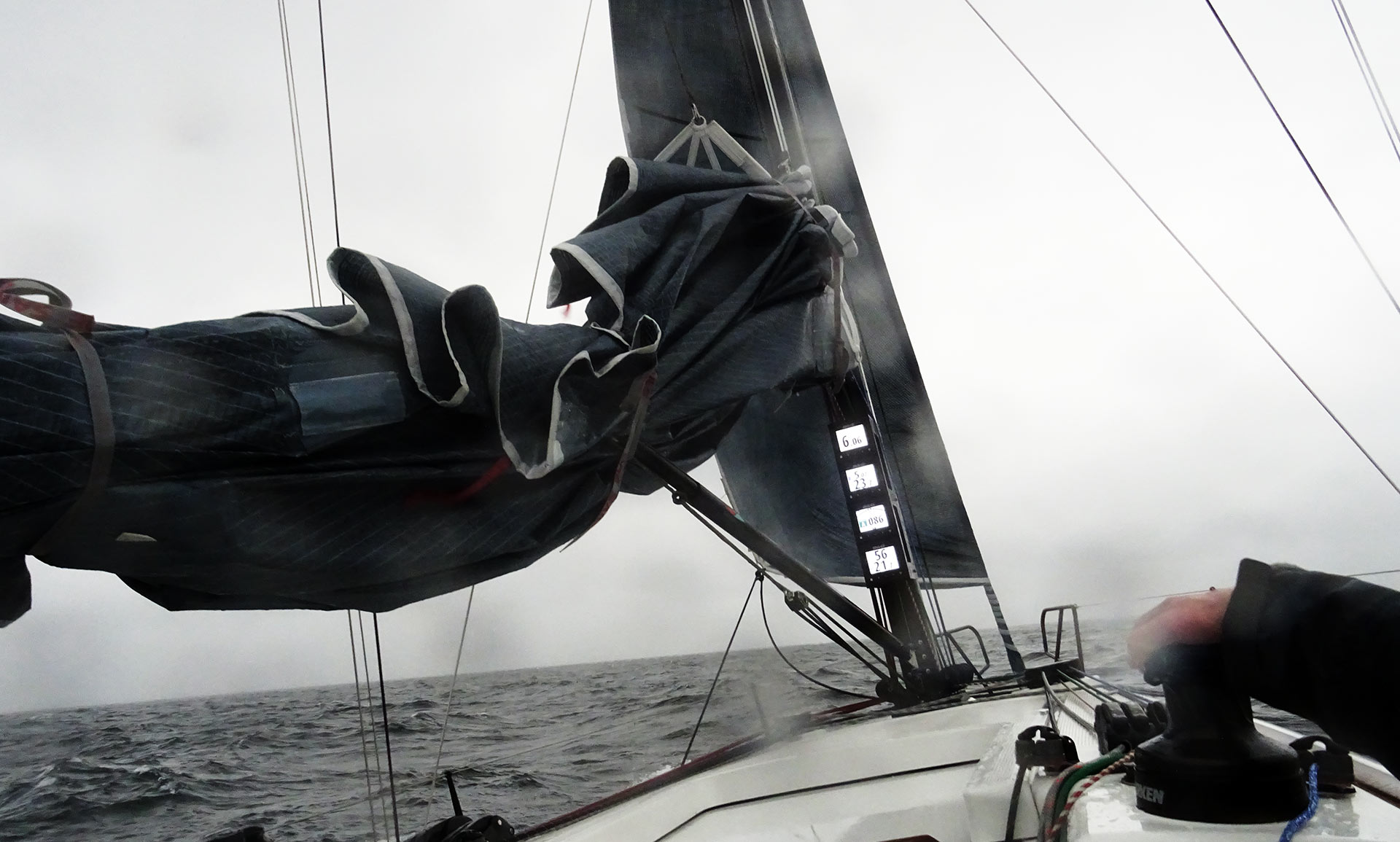
The owners never had fitted the second reef properly. The green reefing line was attached to the main sail´s clew without having it furled through the aft reefing point. So it simply couldn´t pull down the sail to the boom thus putting in the second reef: It just acted as another outhaul. “See it?!”, I screamed against the quarrel. “No chance – have to fit it in port!” The Windex now showed wind speeds exceeding 26 knots constantly. Even if we could have fitted the second reef, now it was time anyway to put down the main sail in any case, and we did it.

“Dammit!”, I screamed: “20 minutes lost for this hilarious action!” We were steaming hard, fore sail was out at the smallest possible furl to act as a stunning sail, rain mutated into a heavy, cold downpour wetting us to the bones, waves building up sometimes even managed to break spray into the cockpit. “That´s the harbingers of a small low pressure system coming from the West”, my mate announced the obvious. “Let´s get into port quickly!” Automatic steering was barely able to hold course, too big the power of the running seas, too hard the pressure of the gusts now regularly breaking the 30 knots TWS-barrier.
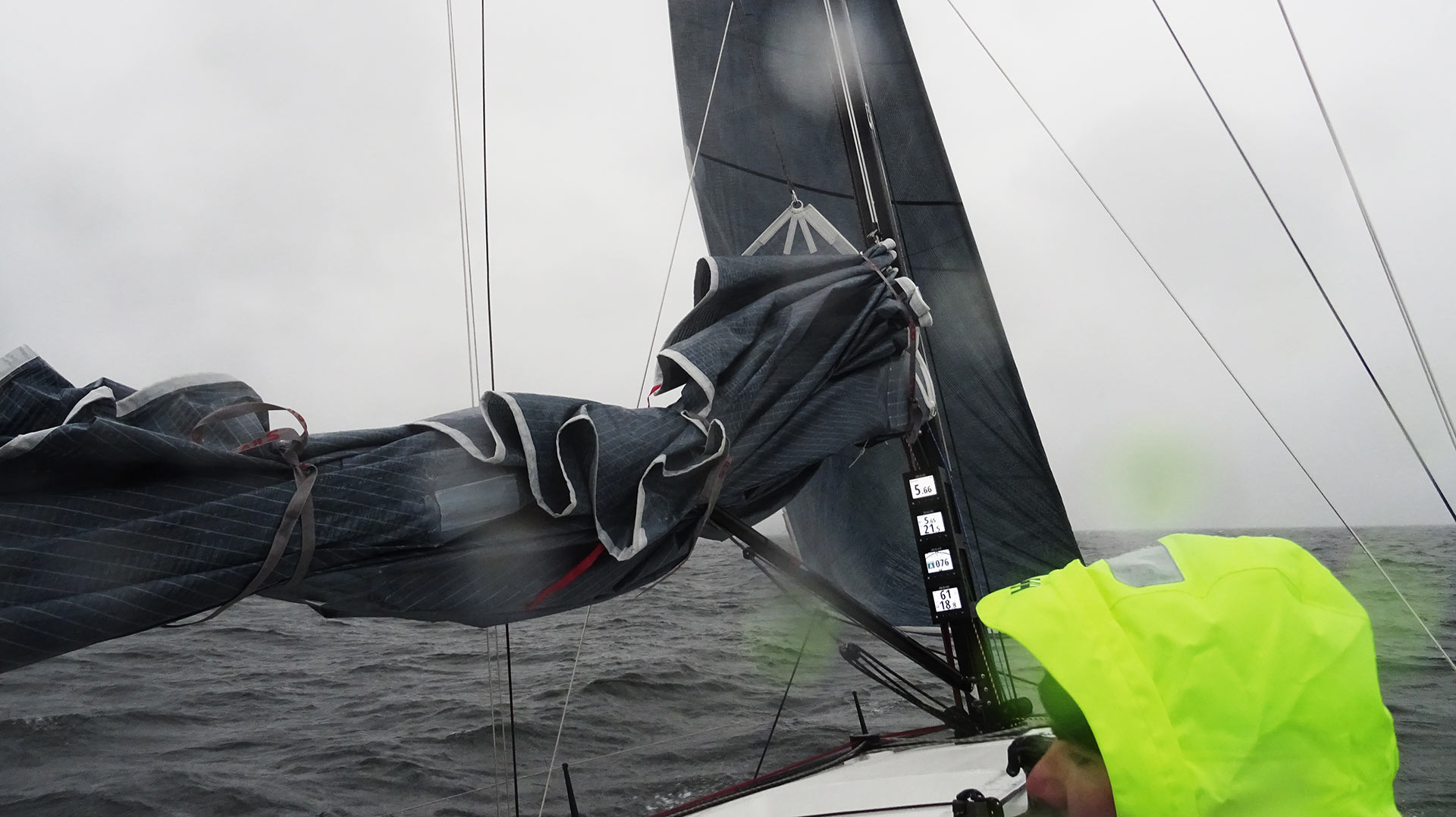
What was about to happen in the coming hours was my first ever experience with strong winds and foul weather in general. Wind speeds are going to remain harsh at around 30 knots well into the dark night, wave height will be building up at 1.40 to 1.60 meters. Remember: We are on a nine-meter boat! The shaking of the boat got pretty hard, holding course was a real effort at the tiller and I had to work myself sweating wet to keep the boat on track. “Is it clever to remain on this course?”, I began to think of alternative destinations: Why not running before the wind to seek shelter in a port nearby? Time for foul weather tactics and a lesson in storm sailing.
Foul Weather Sailing Lessons
I learned more about sailing and good seamanship during the next four hours than on my previous sailing trips before. As the sun went down ever so slightly, temperatures dropped, rainfalls increased as did the force of the wind, mood aboard our boat slipped from having fun going out to sail to serious professional analysis of the situation. We sat in the wet cockpit, the gusts were pressing the raindrops as hard and cold as stitches of needles against our faces and discussed the matter. My mate opted not to reverse course to run before the wind back into a safe harbour, in that case Jülsminde: “Up to now the boat is stable and weather – due to the forecast – won´t worsen. We don´t give up distance sailed so hard. Let´s go through!” I agreed. Rounding the southern Cape of the Island of Samsö was a tricky thing: Due to the predominant currents floating the Cape from North to South there is a strip long rocky shoal of some 6 miles length which we must round in a clear distance. Additionally, a wind park of some 10 wind mills had been installed upon the shoals – and I soon saw them blinking red in the gusty rains showers: “I´d like to round the wind park south.”, I said. My mate shook his head: “Go straight though, we don´t have time to get into too much leeway.” I disagreed and we had a small argument, but later hold a steady course to pass right between the mighty wind mills. It wasn´t a particular nice feeling to prowl right through these some 50 meters high giants with their fast rotating knife sharp blades, especially in the swell where 1.50 metres high waves were constantly trying to push the boat off course. But we finally made it.
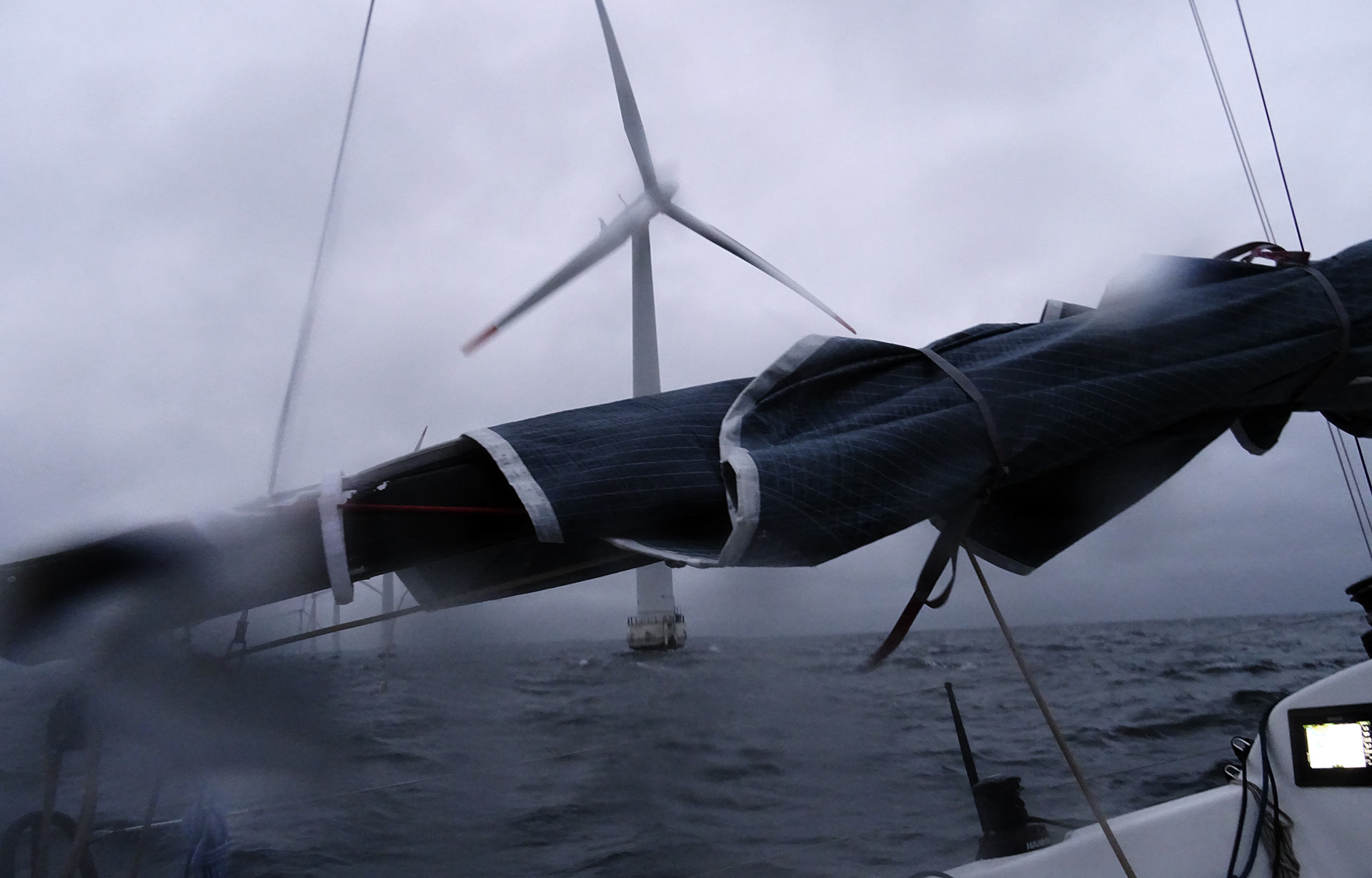
“Course due North!”, I announced the obvious and turned the tiller to port side. The boat now had the waves hitting her abaft right in the stern. The stunning sail lost it´s function completely and we became a powerless cue-ball of the waves. Wind increased to 34 knots TWS in gusts. My mate shouted: “You take the wind speed divided by two and get meter per second.” That would be 17 meters per second now. “And another time divided by two gives roughly the Beaufort scale.” Which would be a high 7 Bft now. Now that we slowly crawled up North the Eastern side of the Island of Samsö we´ve had a sharp lookout for the marina Ballen. A small ferry harbour with a yachting marina attached. The wind was pushing the boat, every time a wave passed underneath, I lost control over the boat for a matter of a split second as the flow around the rudder blades. It got harder to hold course. “Get ready for landing!”, I announced the obvious. It was pitch black. My mate readied his tiny LED-light and as I steamed heavily rolling into the protection of the large breakwater. The swell ceased immediately but the force of the wind remained as strong as ever. My mate hastily prepared the landing lines and fenders (“to starboard!”, as I was second guessing), I had to go half ahead to make any progress against the wind. Then something crazy happened …
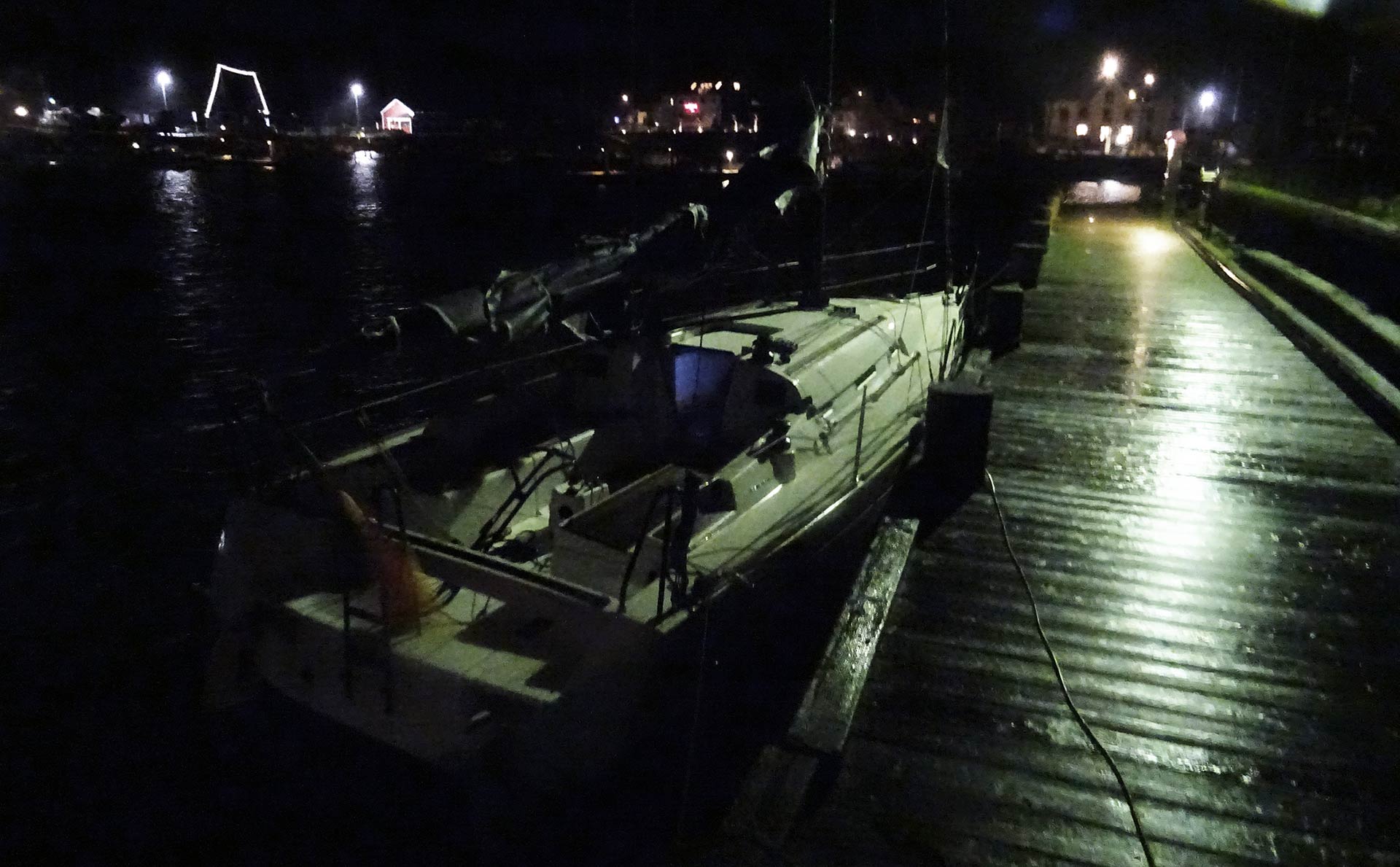
… out of the dark a strong gust began to blow so hard that a gruesome noise in the masts of the mooring boats began to roar. A white wall of dense, cold downpour began to shower down on us right at the time when the boat entered the narrow basin. Suddenly all sight was lost, I couldn´t see a single thing, not my own hands before my eyes. My mate desperately tried to shed a light onto the surroundings in order to help me find a jetty to land, but my glasses were full of blinding water, I shouted: “I can´t see anything! Aborting!” and laid hard rudder to get out of the basin back to the open sea. I was lucky not to hit the breakwater and the boat soon shook heavily. “Changing positions! Take the helm! I can´t see a thing!”, I shouted and handed over the tiller. The gusty rain shower didn´t cease but we had to land now. My mate steered back into the basin again and through the rain I spotted a pier side in leeway: “Let her drift onto the pier at starboard side!”, I shouted. And so he did. Just as the rain stopped and the clouds ripped apart to give way to a perfect clear star-spangled sky, we had the boat tied up safely. A long sigh of great relief came out of our throats.
Life on board a Beneteau First 30 Performance
“Dammit that was so dangerous!”, my mate shouted. He was right: We left port with a lousy equipped boat in terms of safety. It was a gamble to sail through the night and do port maneuvers without any deck light nor any hand held devices. But there was no turning back. “Let´s leave very, very early tomorrow”, he assumed, “and try to reach the next harbour in daylight.” After we got rid of the soaked clothing and I got on my dry warm jumpsuit I connected electric shore power and switched on the ceramic heater I brought to the boat. Setting to “hottest” the boat quickly warmed up and we could let loose our stressed muscles. The mooring beer did it´s share and we relaxed a bit.
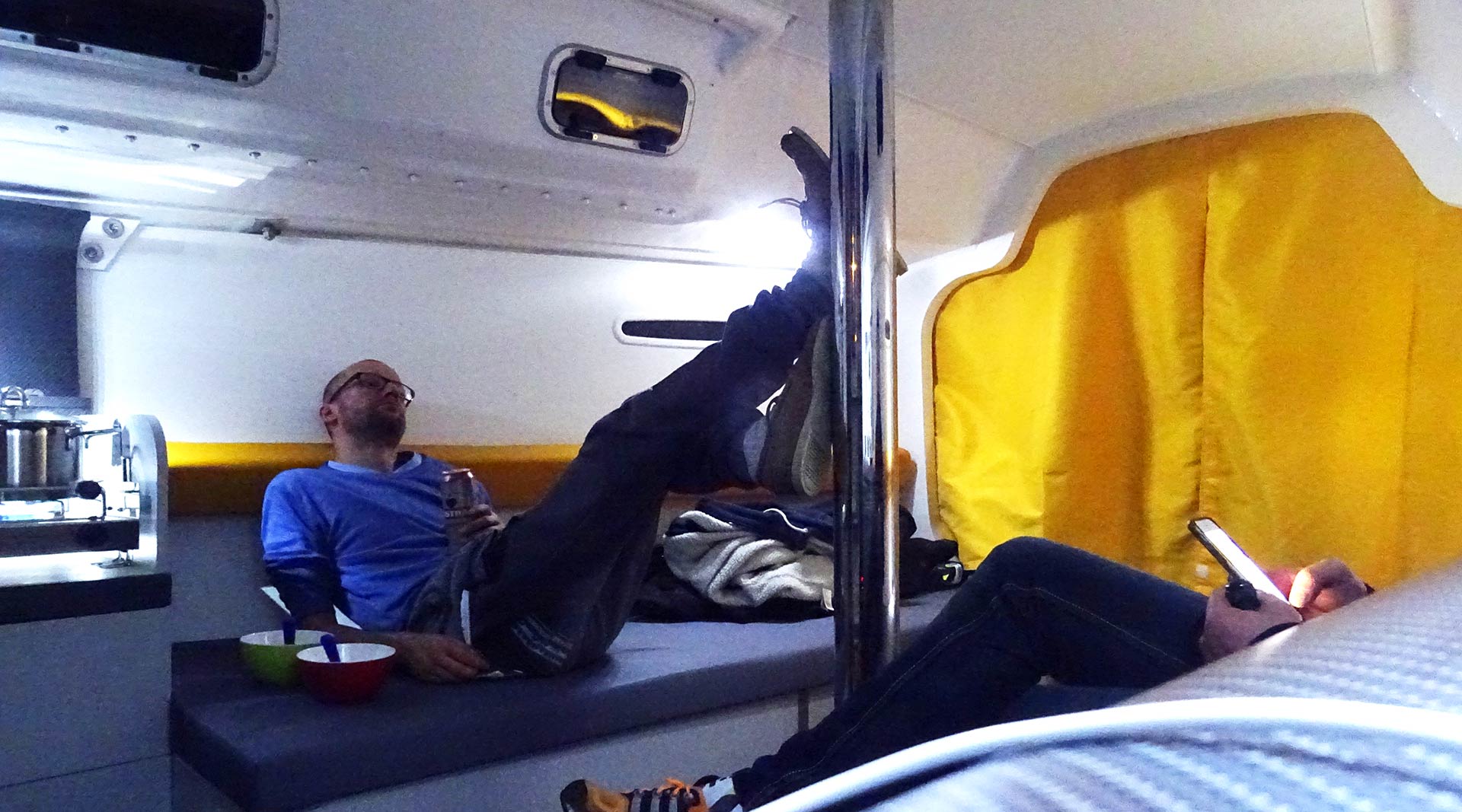
Our tummies were roaring like the beasty winds which didn´t lose a knot of strength in the meantime, the boat was shaking at her mooring but we had it dry and warm. First ritual after opening the beer was to seek a WiFi connection (which isn´t a thing in all of Denmark) and to get the latest weather prediction charts. Both myself and my mate were shaking in awe: There was a huge low pressure system approaching from the West. “Winds will slow down a fraction tomorrow around 2 p.m. but remain strong the whole forenoon”, we read the charts. Steady winds of around 24 knots, waves or 1.40 characteristic heights (even more) didn´t promise a nice sailing day: “Same shit as today, probably worse”, my mate stressed.
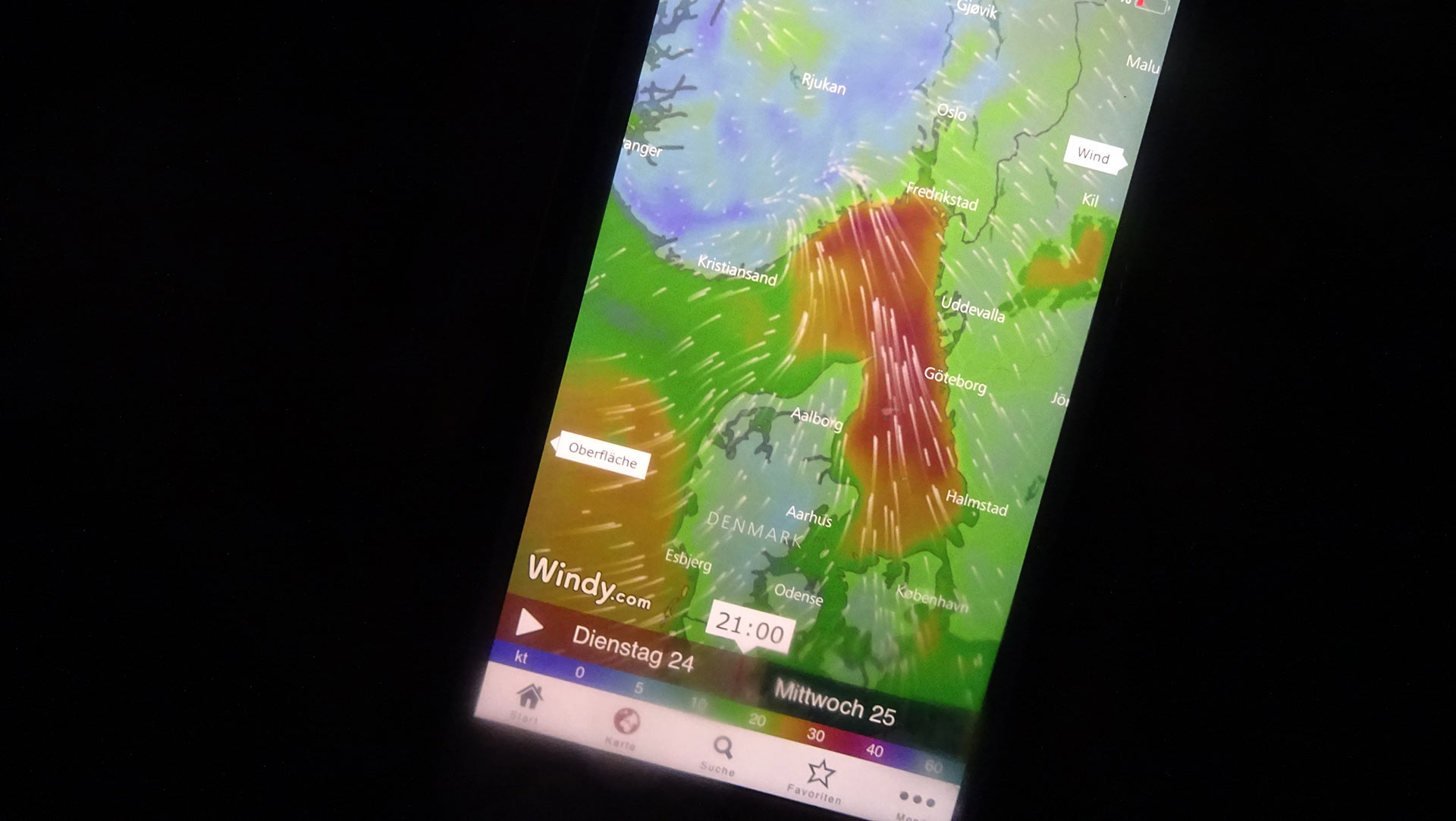
Winds are expected to shift due West. As we had to go down South for the next leg it meant we would get the full broadside of the approaching low pressure system for the first 20 or so miles: “A long fetch for big waves to build up, let alone a free run for gusts!”, my mate assumed. Later the day, when we reached Eastern Fyn and Langeland, we would get land shelter – at least waves are expected to cease, but winds would remain strong and gusty. We decided to leave as early as eight a.m., head down as fast as we could to reach wind-shelter from Langeland and maybe – maybe – try to set sails off Langeland. “Let´s make as many miles tomorrow as we can”, my mate further stated: “We have three days to head home until the real blow will hit.” On the Windy.com screen forecast in three days the colour turned completely violet: Certain death for a boat that small.

After checking weather, doing some log book entries and recapitulating the sailed distance of today´s leg I laid down a couple of minutes to warm up and relax. Then it was time to prepare the dinner. We rarely ate today due to the foul weather and our stomachs were already aching hard. On a one-flame-stove there aren´t too many options to prepare fancy meals so I first cooked some pasta al-dente, later heated up a can of tomatoes with sautéed onions, some slices of bacon and basic spicery. Huge piles of hot steaming red pasta filled the biggest cups we could find and we ate with delight to fill the empty stomachs.
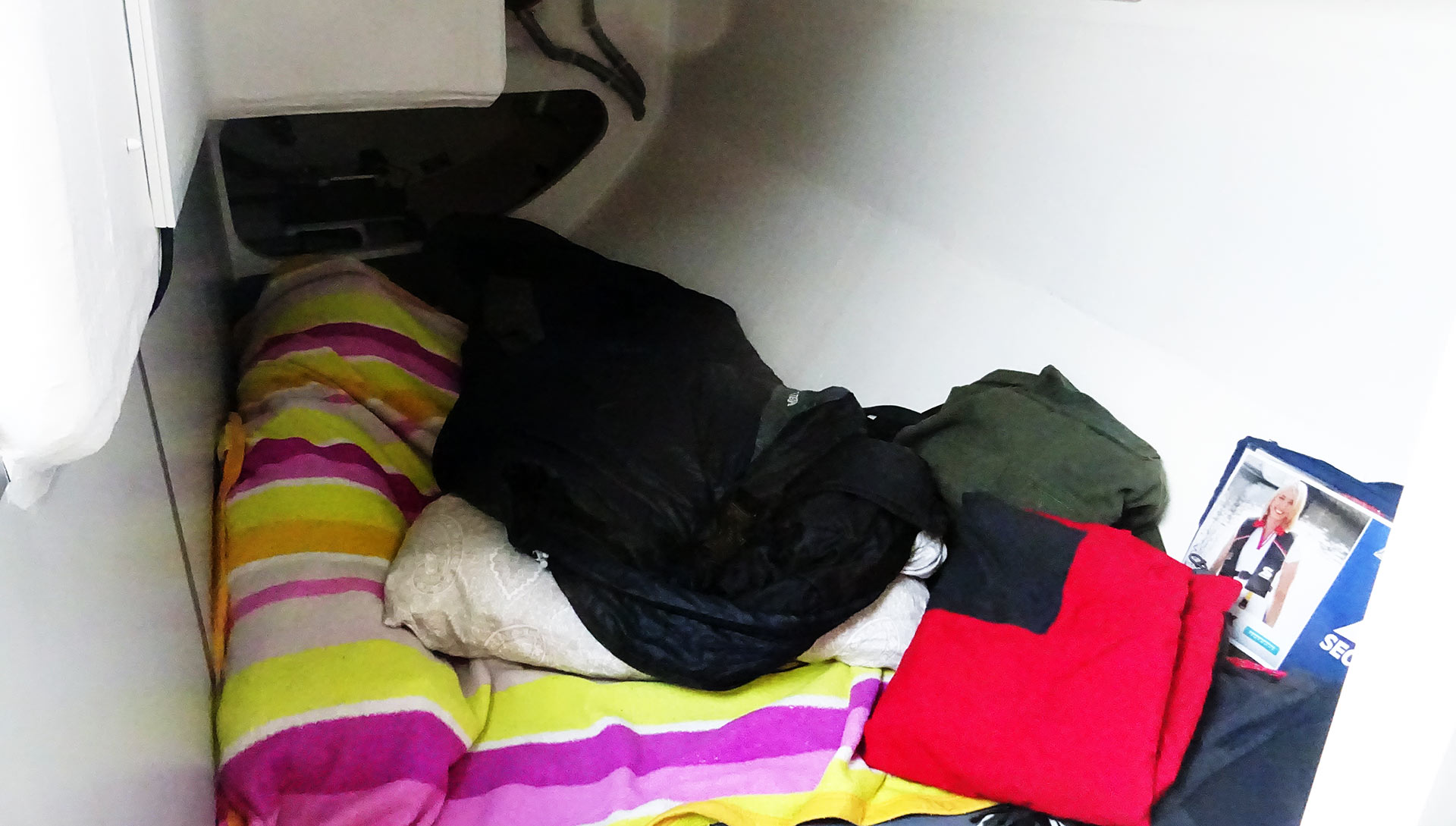
Later we had another last beer and crawled into our cabins. On the Beneteau First 30 Performance the word “cabin” is a bit over fulsome because this boat is fully trimmed to be as light as possible. Where on the two-cabin version First 30 I sailed on to Bornholm a proper bathroom and real cabins with cupboards, closets and stuff had been fitted, on this boat there is nothing more than a simple cushion on the bed flooring. There isn´t even a panel to close off the “living area” from the rudder housing in the aft section in the boat, no closet for clothing, no cupboards whatsoever. A rather simple style of living here, but I loved it. Just “no frills” sailing …
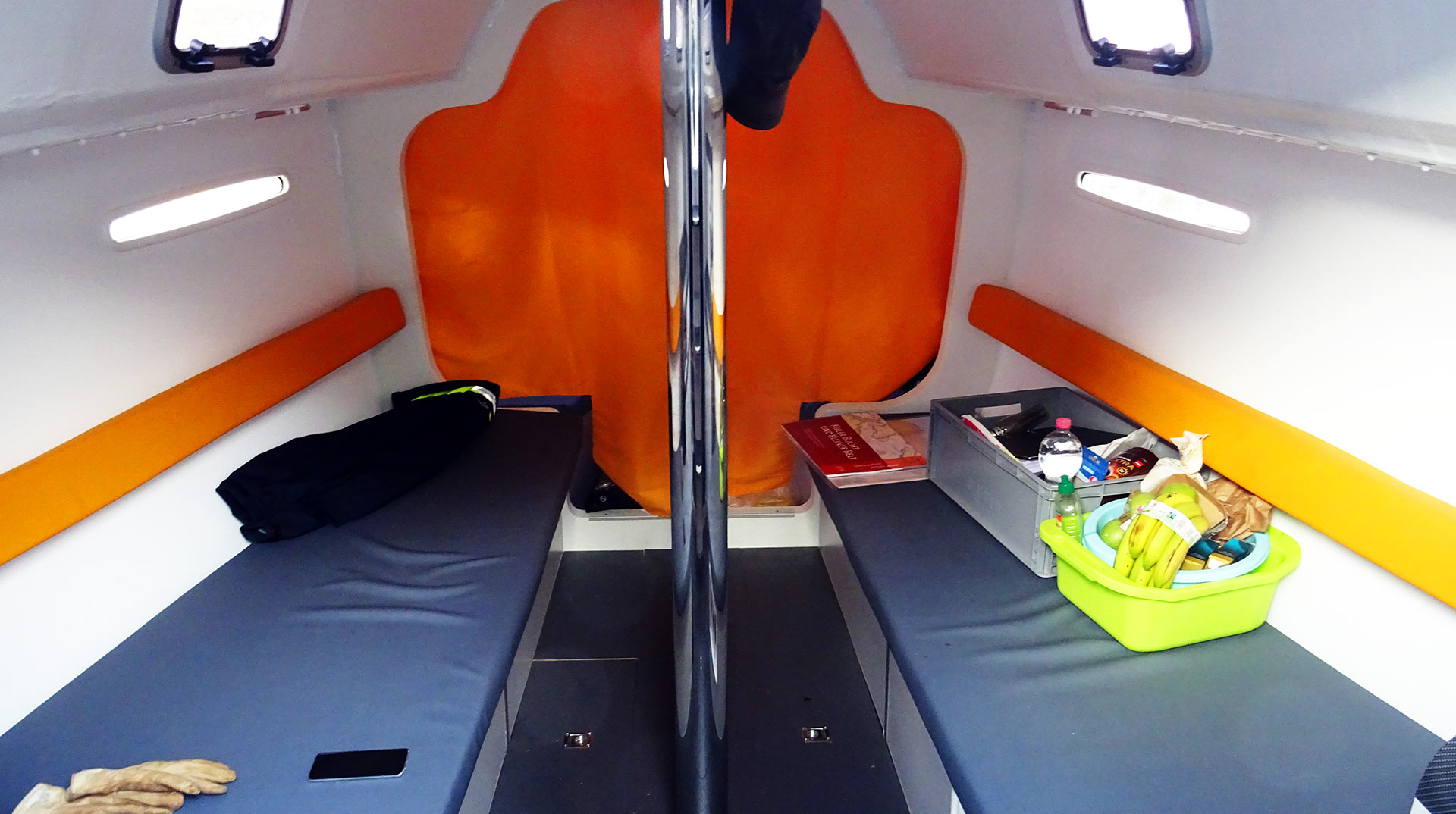
The saloon isn´t an exception from this: There are two benches to either side of the saloon, a simple slim backrest and that was basically it. On the starboard side there is a small closet with a folding “navigation table”, but that´s not worth the word: It´s simply impossible to do proper chartwork here because a seat is missing. We used the table for stowing purses, smartphones and stuff and I never got warm with the idea of using the table for navigational purposes. On the port side vis-à-vis there´s the same configuration but that´s called the galley. A simple one-flame stove and a small sink is fitted here, the stowage underneath had been used for taking on our plates and cooking stuff.
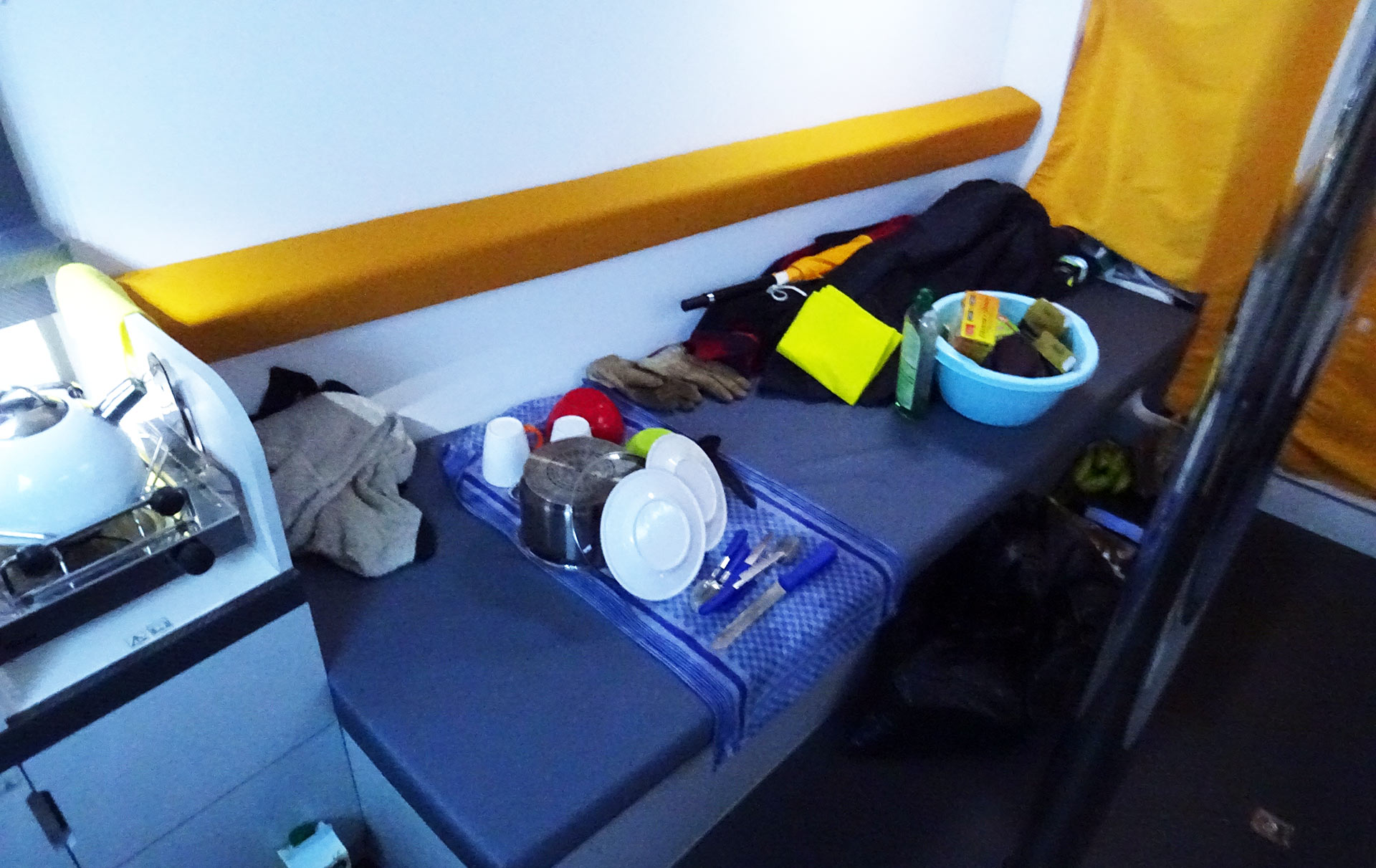
Since there is no table in the saloon whatsoever, the Beneteau creates a feeling of huge space. But the practical side of this takes a bit getting used to. I used to chop stuff for cooking on the very stepgs of the entryway, eating had to be done by placing the plates and bowls on one´s knees. Doing the dishes or any other activity normally calling for a table had to be diverted onto one of the seating sofas. As I said: A no frills sailing approach, even the Pogo 40 offered more comfort and amenities.
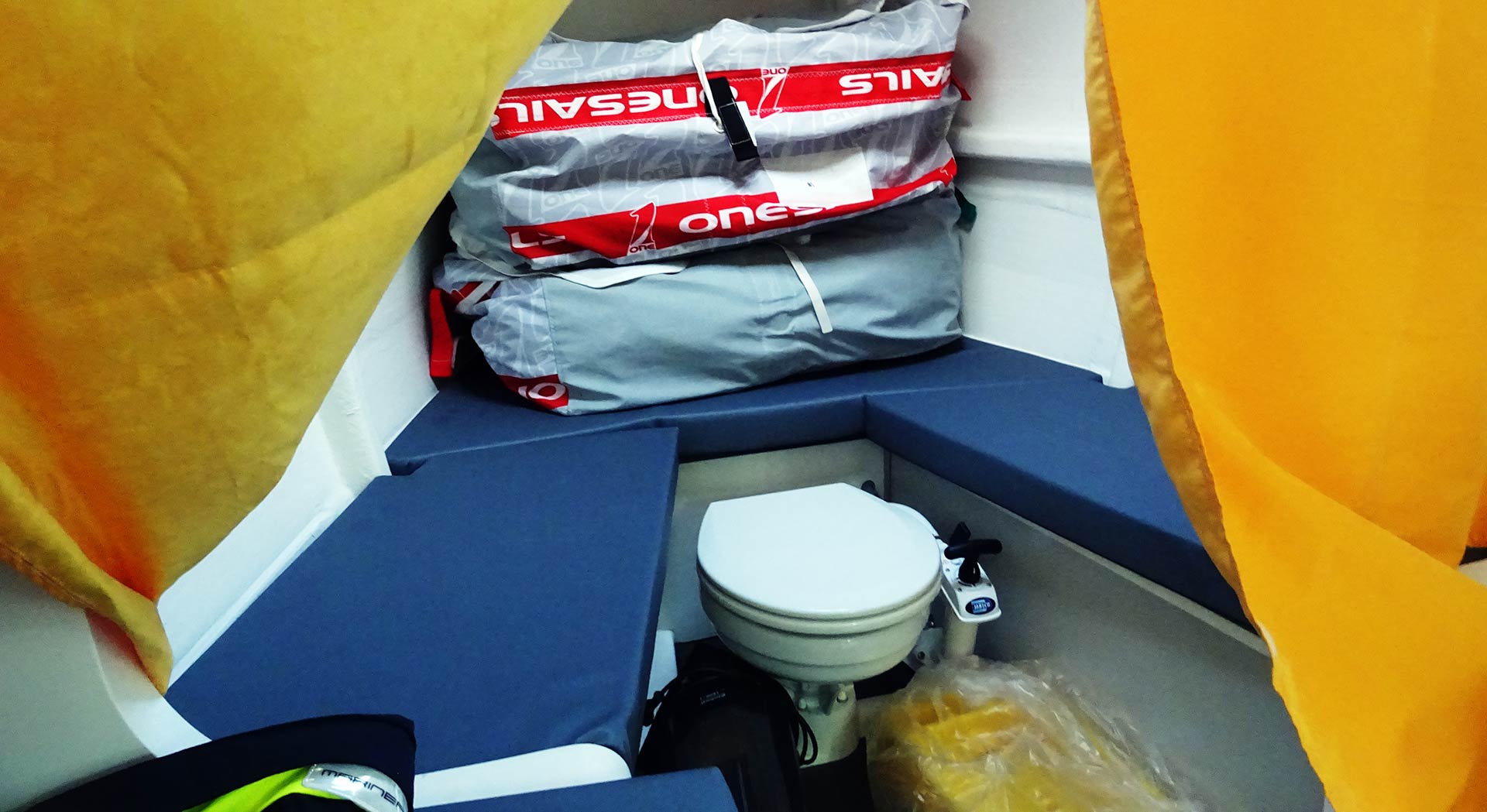
Best of all was the “fore cabin”, which on the first sight offered a huge area of laying down (in our case various sails, a Gennaker and a Code 0 had been stored here, but this could also easily have been used to house people. If it wasn´t for the WC which was situated under the middle board. It´s a kind of disturbing idea to place one´s head for a good night´s sleep right above a toilet, so it was of no question which configuration we opted for. We took away the board, fitted some bright yellow drapes and the new head was ready. Well, situated right in the bow it was a true adventure to relief oneself here during the actual sailing, but anyway, it fitted the to overall concept of the yacht itself.
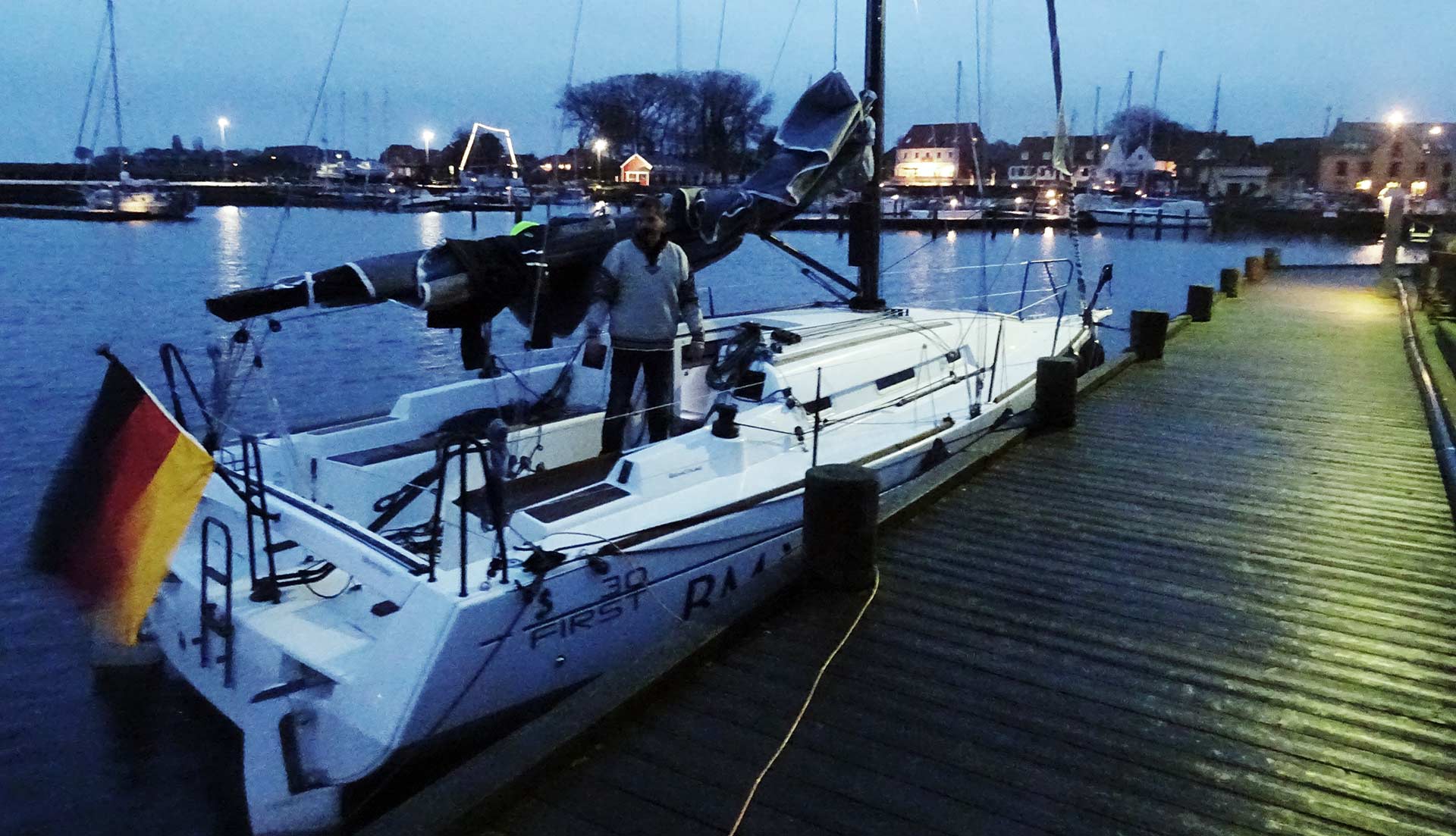
After a short night – the boat was shaking heavily in the ever hard blowing gusts – we got up at seven in the morning. It was still very dark and since we didn´t had any motivation for preparing a proper breakfast (we were still very tired and down from the previous stormy sailing day) all I could do was to make a hot coffee. Cleaning the most sensitive spots with a wet wipe, brushing the teeth and getting dressed up took some 45 minutes. We had to cast off very early in order not to repeat yesterday´s faults and get into the safe land cover of Langeland before the wind would rise to new brutal heights.
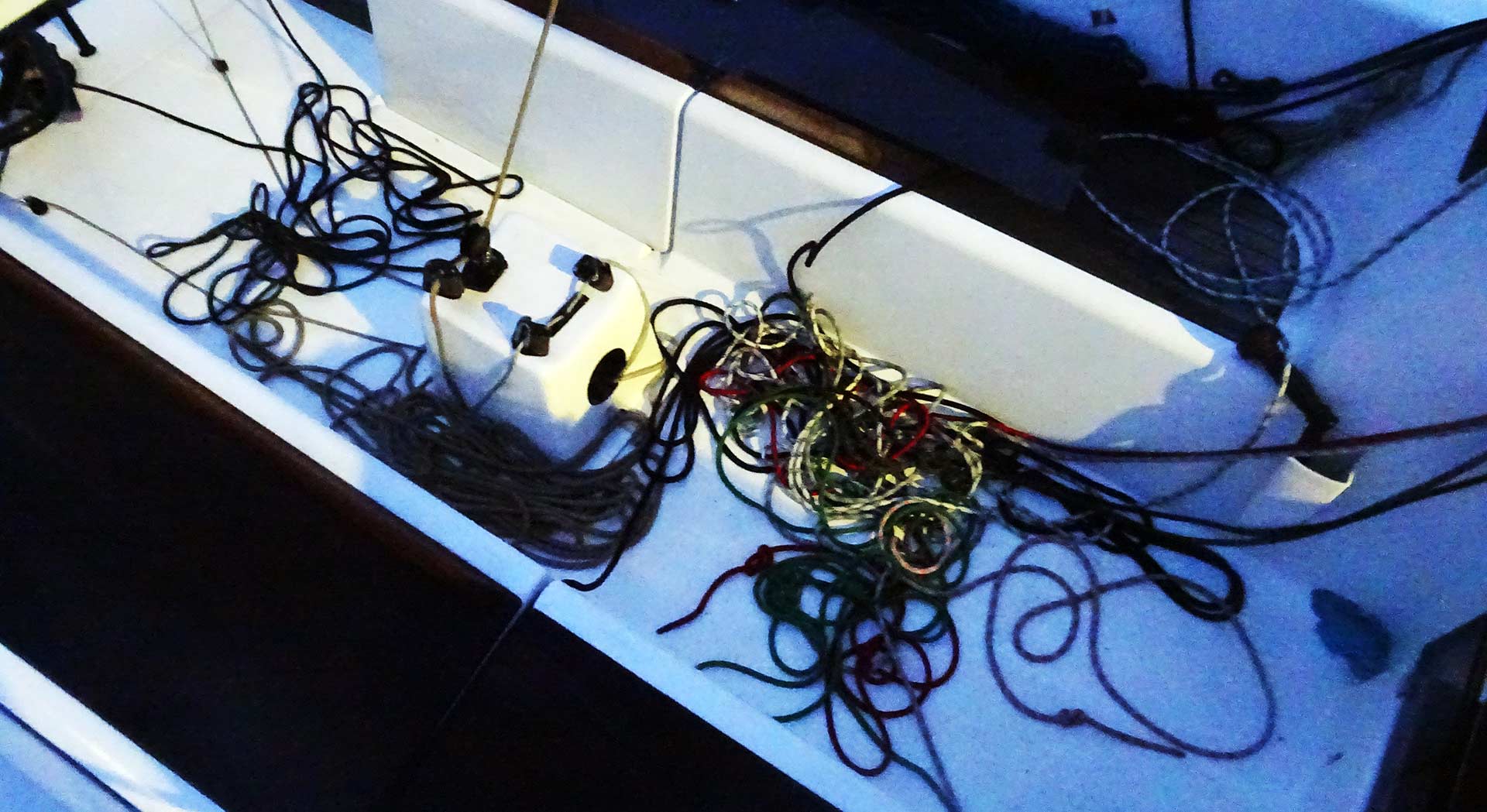
I try to be a proper sailor so getting a boat cleaned and tidy after a sailing session, especially the roping, is a matter of course. But yesterday night it was all too much for us, so when we entered the cockpit we found a real mess and had to coil up the lines properly, disconnect shore power and rig the boat for another day of stormy sailing. As my mate puts it: “This is not holiday. It´s more a foul weather training!” And this is what unfolded during the coming hours …
Part 2 will cover the sailing legs from Samsö via Langeland back to German shores. Another stormy leg, bad weather training and wonderful sailing at last. Stay tuned!
You may read all articles related to this sailing trip by clicking on this hashtag #samsoe
You may also like reading:
Sailing round Fyn in a Class 40 Pogo 40 racing yacht (Part 1 and Part 2)
Sailing a Beneteau First 30 to Bornholm (Part 1 and Part 2)
A Day at Luffe Yachts in Denmark
